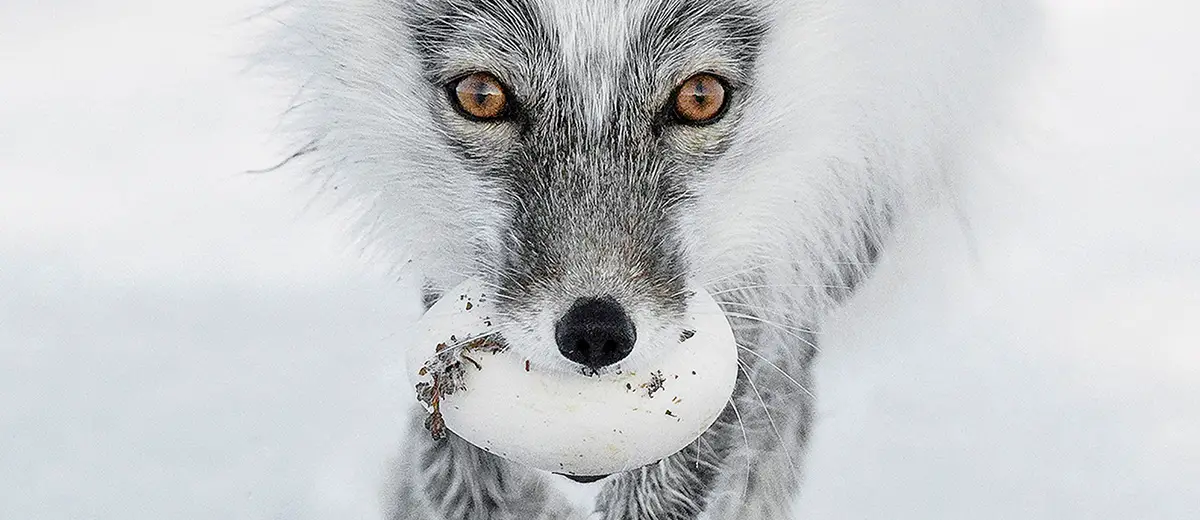All 22 Species of Foxes (With 40+ HD Photos)
There are arguably few animals more majestic than the fox! The subject of fascination and folklore the world over, foxes are often depicted as wise, crafty animals who outfox their adversaries using cunning and charm. Not only is the fox one of the most visually varied animals on the planet, but their combined distribution is also vast, stretching to the corners of 6 of the world’s 7 continents.
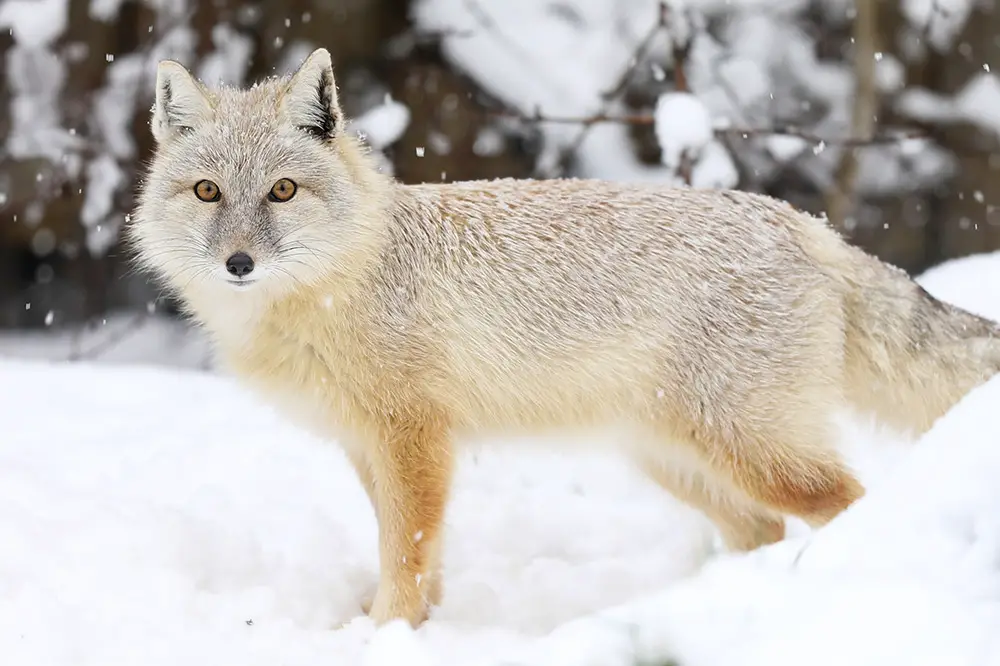
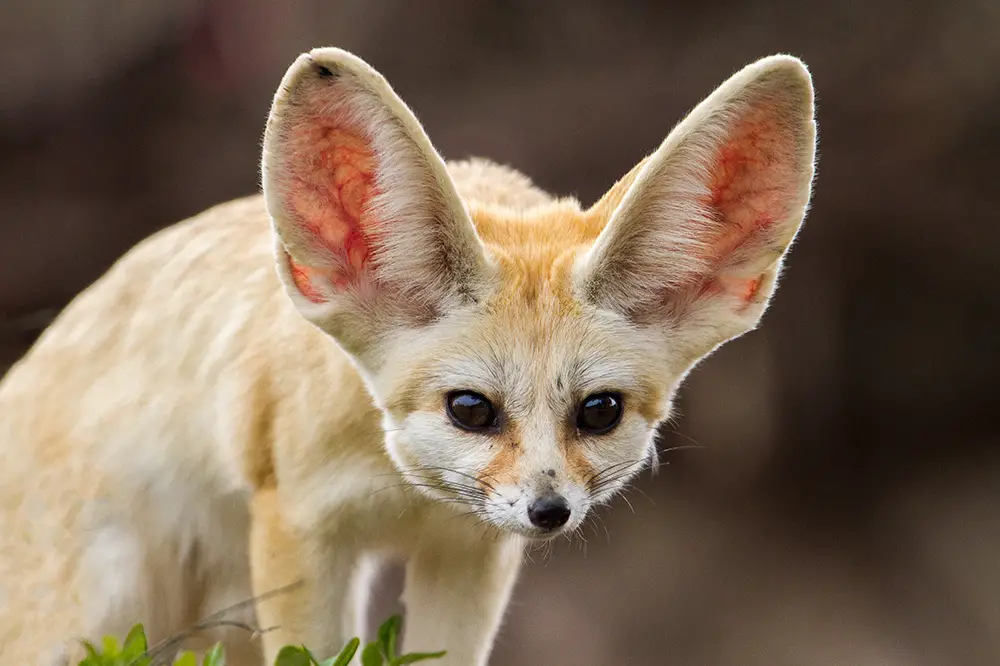
Left: Corsac fox in winter pelage / Shutterstock & Right: Fennec fox from North Africa / Shutterstock
Contents
- Red fox | Vulpes vulpes
- Arctic fox | Vulpes lagopus
- Grey fox | Urocyon cinereoargenteus
- Island fox | Urocyon littoralis
- Swift fox | Vulpes velox
- Kit fox | Vulpes macrotis
- Andean fox / Culpeo | Lycalopex culpaeus
- Sechuran fox | Lycalopex sechurae
- Darwin’s Fox/Zorro | Lycalopex fulvipes
- South American gray fox | Lycalopex griseus
- Pampas fox | Lycalopex gymnocercus
- Hoary fox | Lycalopex vetulus
- Crab-eating fox | Cerdocyon thous
- Bat-eared Fox | Otocyon megalotis
- Cape Fox | Vulpes chama
- Fennec fox | Vulpes zerda
- Pale fox | Vulpes pallida
- Rüppell’s fox | Vulpes rueppellii
- Corsac Fox | Vulpes corsac
- Tibetan Fox | Vulpes ferrilata
- Blanford’s Fox | Vulpes cana
- Bengal Fox | Vulpes bengalensis
Red fox | Vulpes vulpes
Our first species, the common fox, has a deceptively boring name! More often referred to as the red fox, its iconic orange pelage is accented by a bright white underside, particularly on the chest, lower portions of the face and the tip of the tail, and darker areas on the bottom of the legs, the backs of the ears and to a varying degree throughout the rest of the coat. As iconic as this colouration is, it is the variations in pelage that make the red fox one of the most impressive species with several spectacular colour morphs including the melanistic silver fox and the partially melanistic cross fox, which features a mixture of orange and black hair.
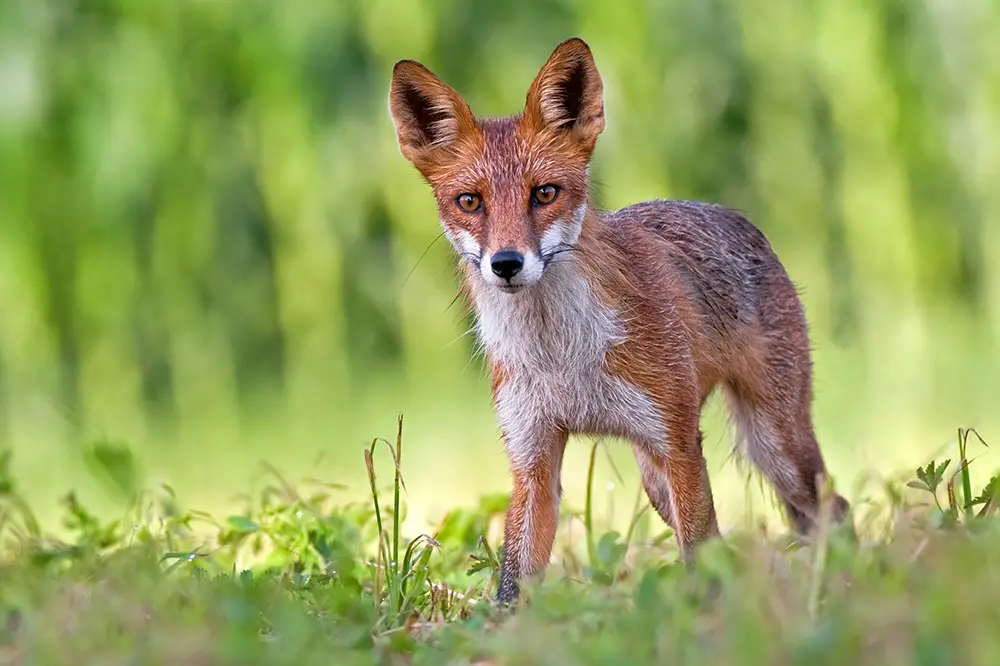
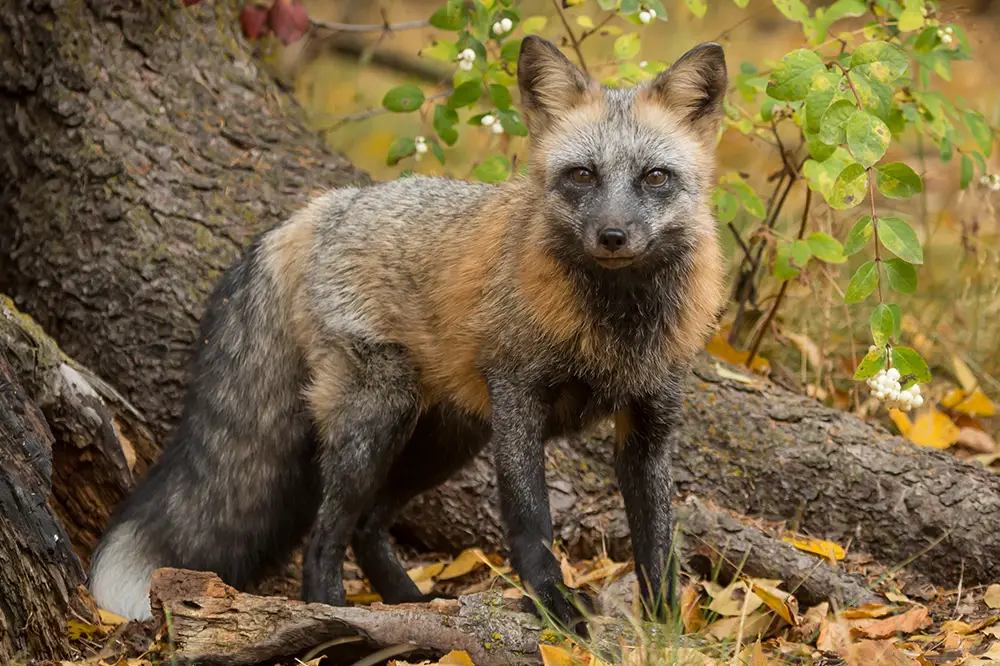
Left: Red Fox with classic colouring / Shutterstock & Right: Cross fox – partially melanistic colour morph / Shutterstock
At 30.84 lb / 14 kg, the red fox is the largest of all 22 species and has the largest natural distribution of any non-human land mammal, found throughout most of the northern hemisphere and has also been introduced to Australia. Thanks to this enormous distribution, the red fox is the most taxonomically diverse species with over 40 subspecies. Though much of their range is found in temperate zones where they occupy a wide range of habitats including forests, grasslands and mountainous terrain, in addition to urban and agricultural areas, there are some subspecies of red fox found in vastly different habitats. At the southern end of their natural range, several subspecies occupy the arid regions of the Middle East including the Transcaucasian montane fox found in northeastern Turkey and the Arabian red fox, which has larger ears to dissipate heat. At the northern end of their range, there are several subspecies accustomed to the snow, including the Edo red fox found in Hokkaido and others whose ranges overlap with that of the next canid on our list.
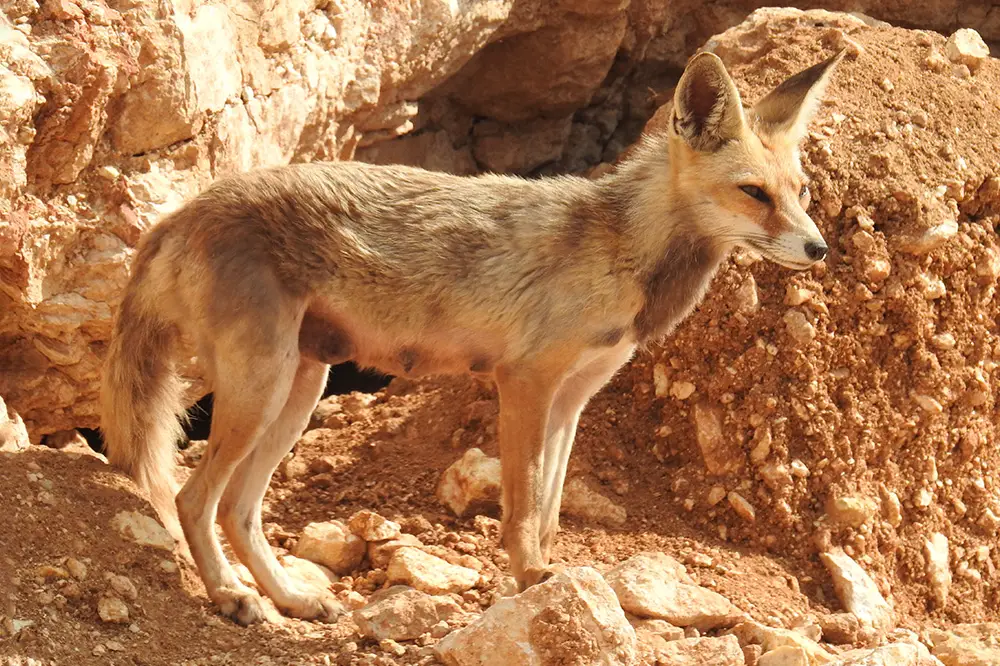
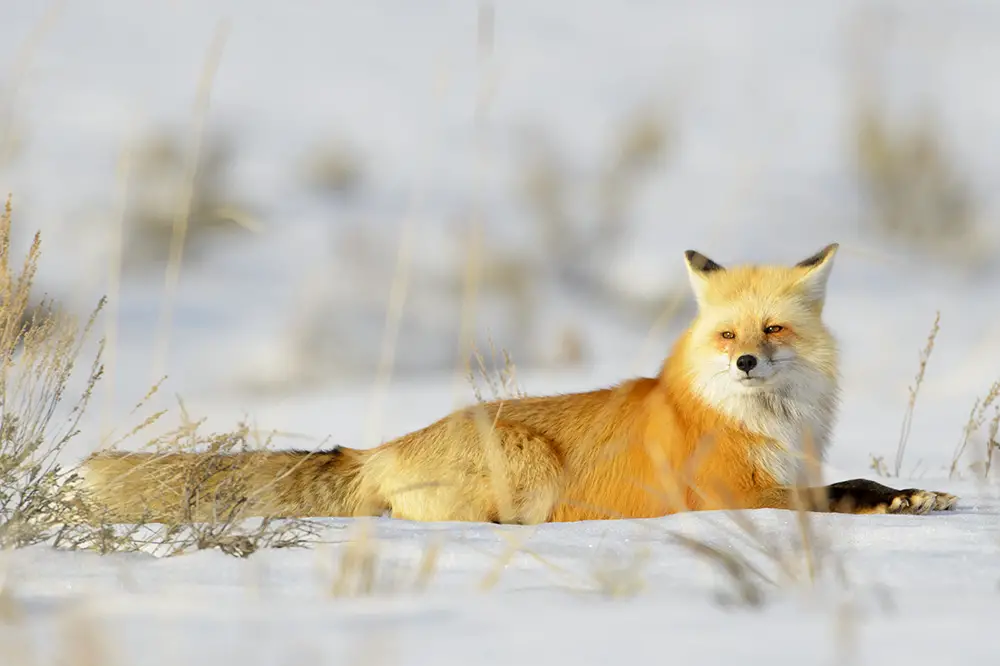
Left: Arabian red fox (vulpes vulpes arabica) / Shutterstock & Right: American red fox (Vulpes vulpes fulva) / Shutterstock
Arctic fox | Vulpes lagopus
With a circumpolar distribution, the Arctic fox has a much simpler ecology, most often found in Arctic and alpine tundra where it preys on small mammals such as lemmings and voles in addition to a wide variety of other small animals, eggs and berries. In the summer, they will store surplus food in a compartment in their dens, which are dug into the tundra or at the base of cliffs and house their family unit. Arctic foxes form monogamous mating pairs with the female fox, known as the vixen, giving birth once or twice during the spring and summer seasons. Litters usually contain 5 to 8 pups, also known as kits or cubs, after a gestation period of 46 to 58 days.
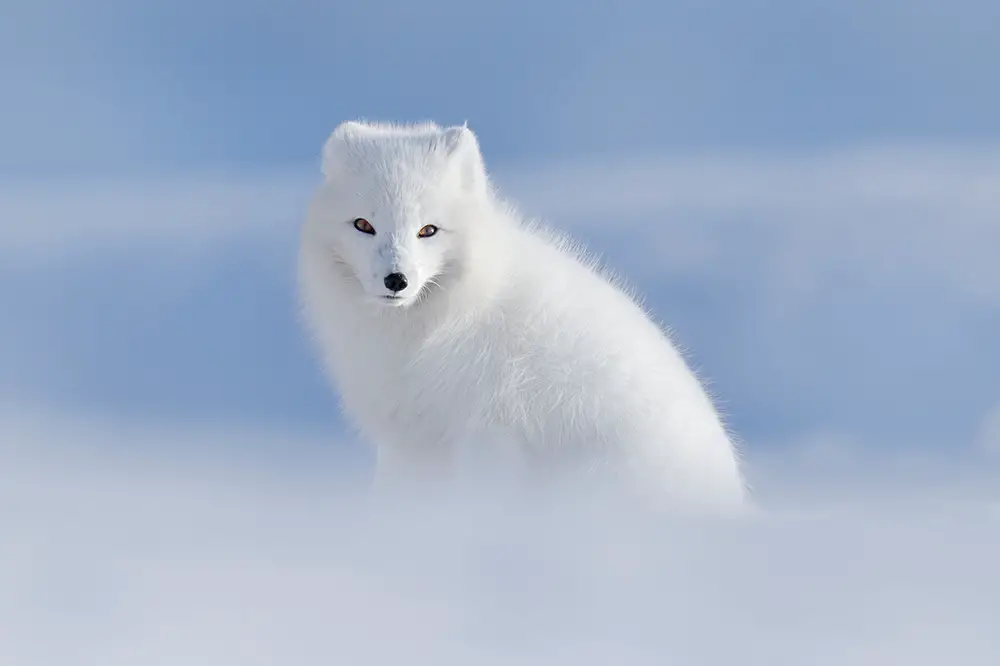
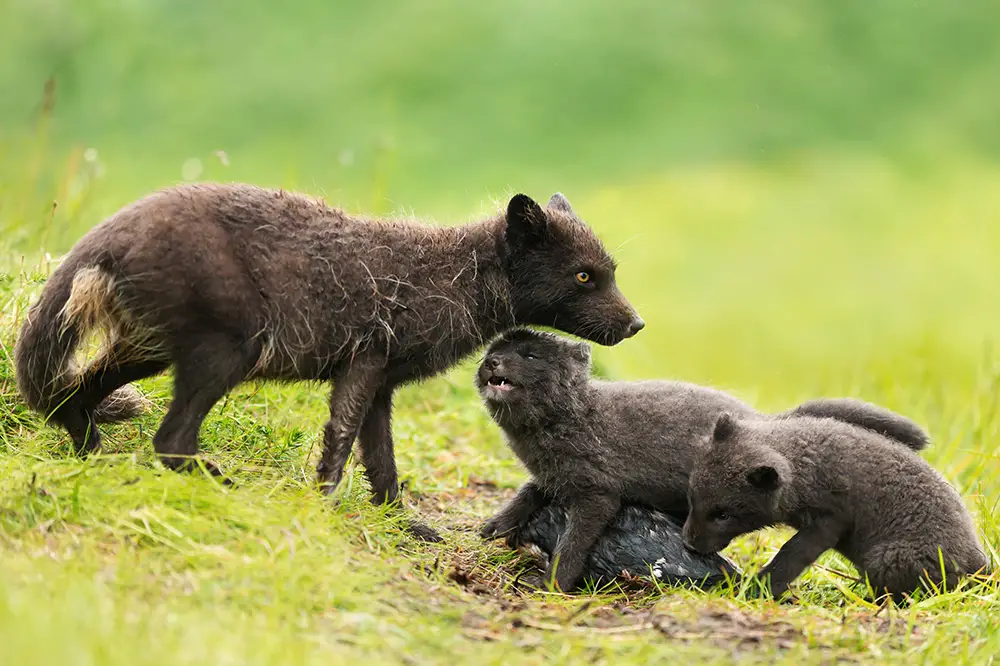
Left: Arctic fox with winter pelage / Shutterstock & Right: Arctic fox vixen with pups / Shutterstock
At 11.5 lb / 5.2 kg the Arctic fox is much smaller but is another species with considerable variability in pelage. This variability, however, occurs seasonally as their icy winter environment melts away towards the warmer summer months. During winter, their coat is a bright white, providing the perfect camouflage in the snowy terrain. In the spring, they begin to shed this coat, which turns to a greyish brown, and again, aids in camouflage against the thawed tundra and rocks. The Arctic fox has small ears in addition to a smaller snout and shorter legs, all of which prevent heat loss.
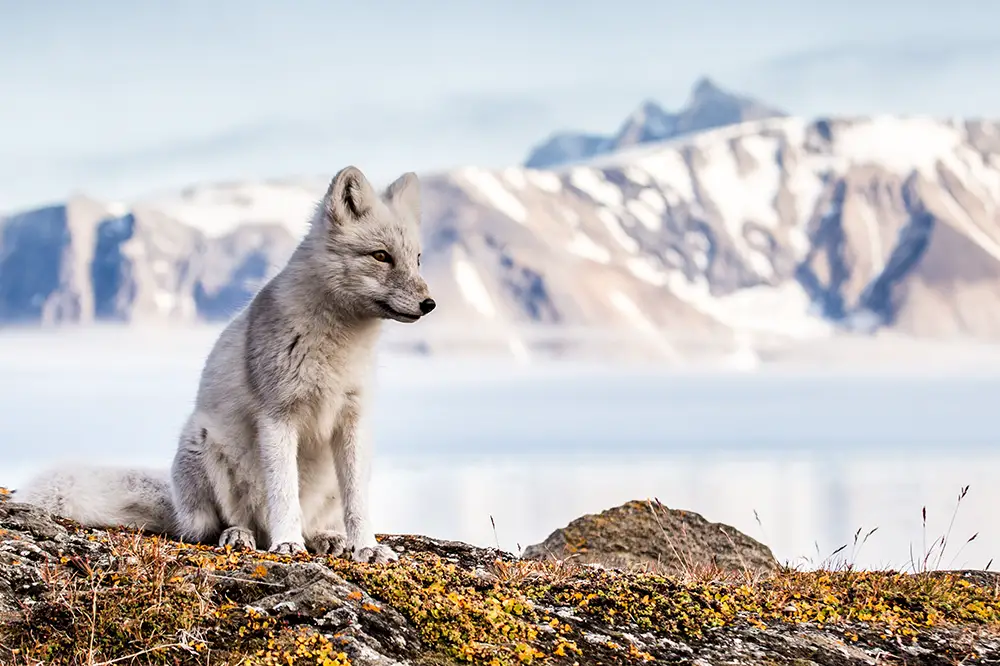
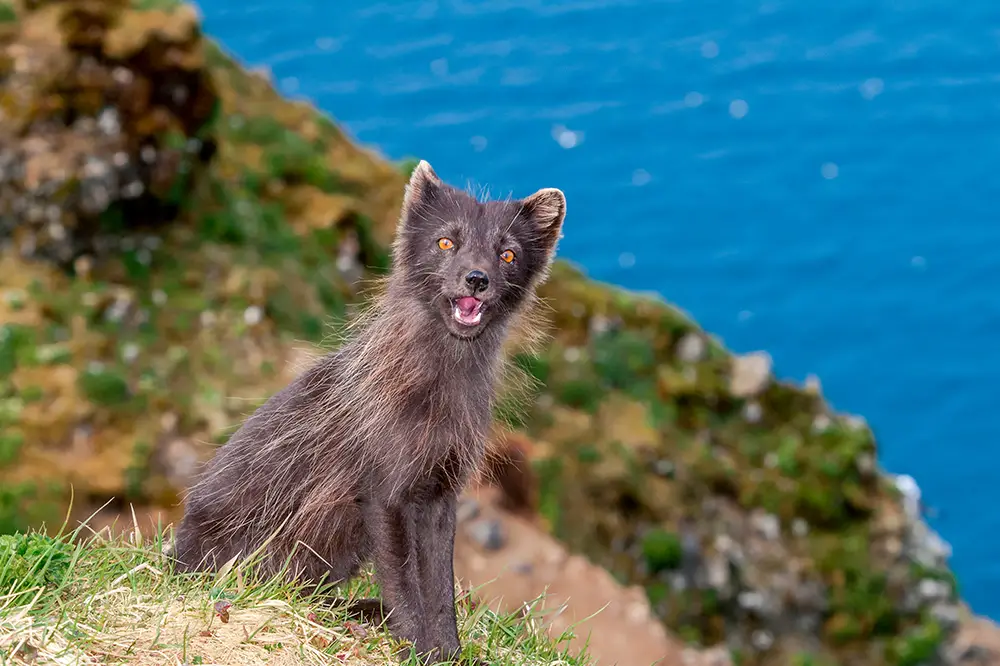
Left: Arctic fox (vulpes lagopus) / Shutterstock & Right: Pribilof Islands Arctic fox (vulpes lagopus pribilofensis) / Shutterstock
North America
For us Europeans, red and Arctic foxes are the only species found on our continent. North America, however, is home to several spectacular species, two of which are categorised in a different genus to those considered true foxes.
Grey fox | Urocyon cinereoargenteus
Although the grey fox doesn’t sport a wide variety of fur colours, it does boast an unusual tendency to climb trees; a useful skill not commonly utilised by other canids. This ability is made possible by semi-retractable claws, which allows the fox to retract them while walking around, keeping them sharp like those of a cat, and then extend them for grip as they quickly scramble up a tree to avoid predators like the much larger coyote. In terms of size, the grey fox is halfway between Arctic and red foxes, usually weighing no more than 15 lb but can be found up to 20 (15.4 – 19.8 lb / 7 – 9 kg). The female usually prepares dens before breeding season, the exact dates of which depend on location, but occurs in the winter months. April is the most common month for births with litters averaging 4 pups who have dark brown pelage, which changes to adult colouration with age. The grey fox is found throughout much of North America and also stretches into northern South America.
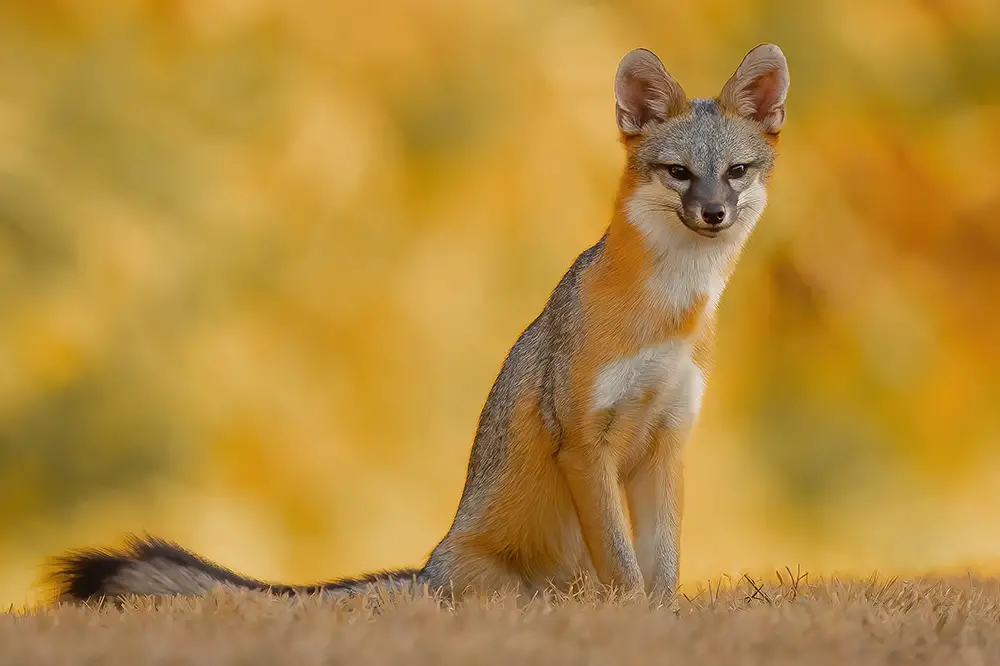
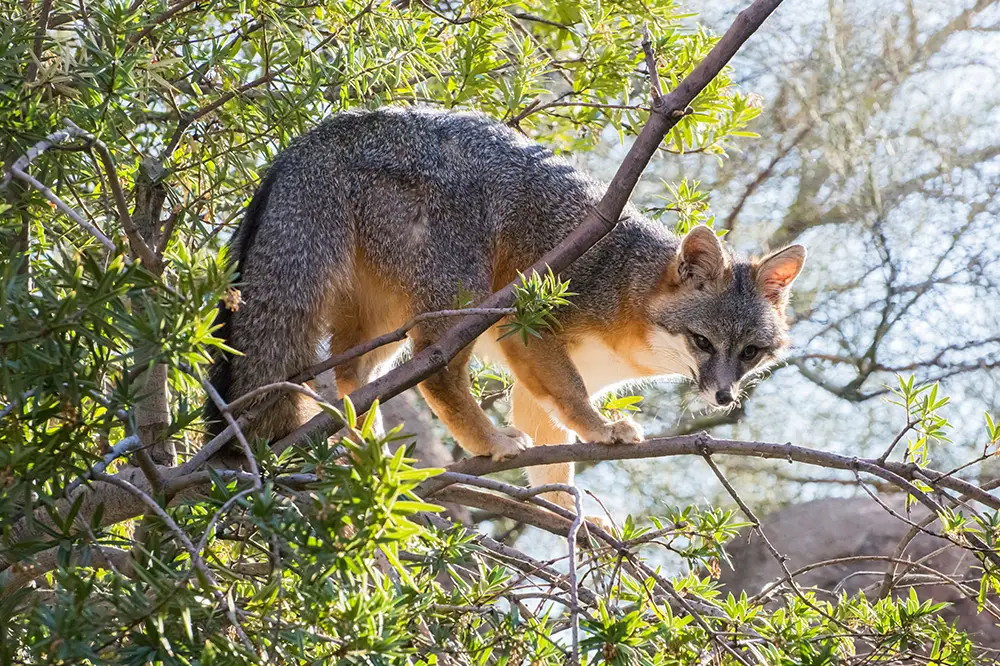
Left: Grey fox / Shutterstock & Right: Grey fox climbing a tree / Shutterstock
Island fox | Urocyon littoralis
To the west of this range off the coast of California sit the Channel Islands, the 6 largest of which each play host to an endemic subspecies of island fox. This species is visually very similar to the grey fox but at no more than 4.4 lb / 2 kg it is around a third the weight. Although these lovable creatures are no larger than a house cat, they are still the largest carnivores of the Channel Islands and prey mostly on invertebrates and, depending on which island they inhabit, will also eat fruit and prey on small rodents. The island fox is one of only 4 species whose conservation status is not listed as Least Concern.
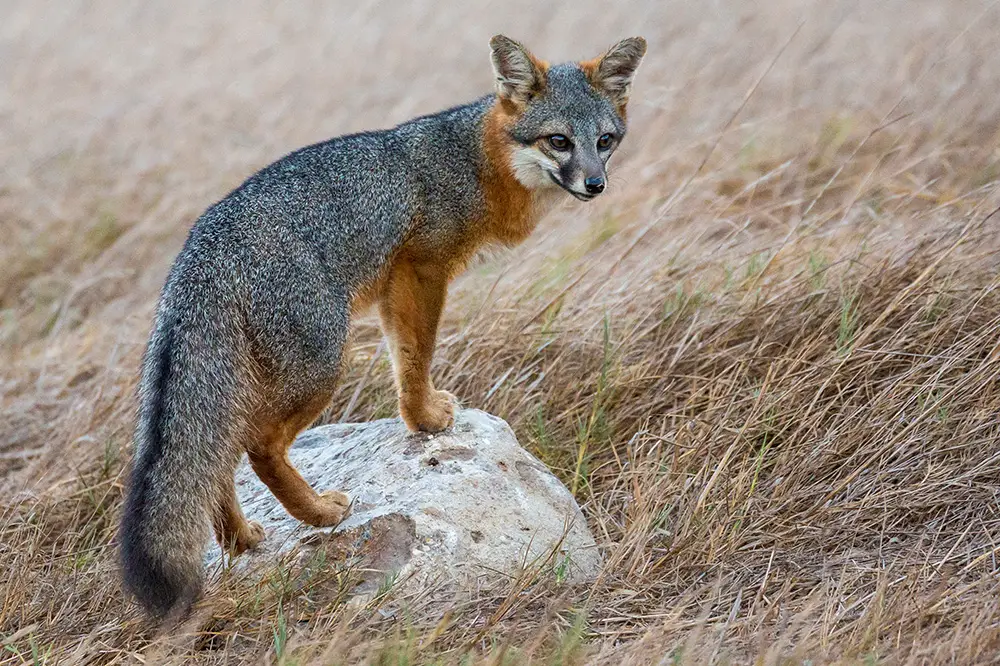
Swift fox | Vulpes velox
Heading back to the mainland, the swift fox is one of the two remaining species on the North American continent, found across the prairies of the U.S. and Canada. Like their island cousins, the swift fox is also quite small, weighing no more than 6.6 lb / 3 kg and their curious faces bear a striking resemblance to the corsac fox which occupies the same habitat on the Asian continent. These animals are generally thought of as socially monogamous, however, a 2005 study published in Science Direct, which analysed almost 200 individuals over a four-year period, highlighted multiple breeding strategies used by the swift fox. Although 93% of family groups consisted of a male and female pair, roughly half of the offspring were sired by a male who was not the mate of the female. The remaining 7% of family groups were led by trios of either two males and one female or one male and 2 females. This strategy is not uncommon in the world of foxes with a single offspring sometimes staying behind to help care for the next litter.
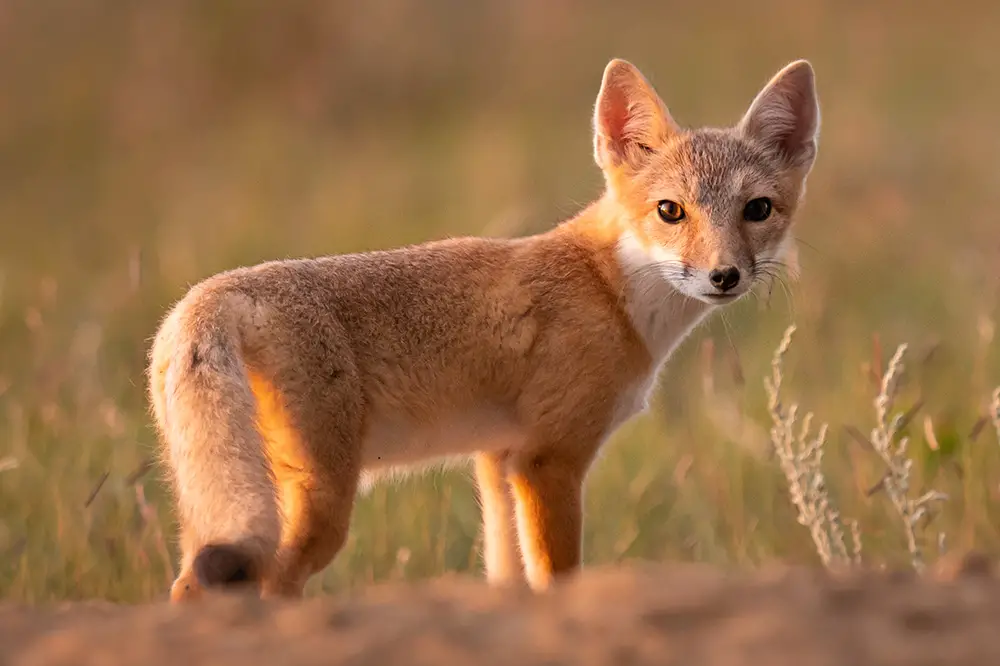
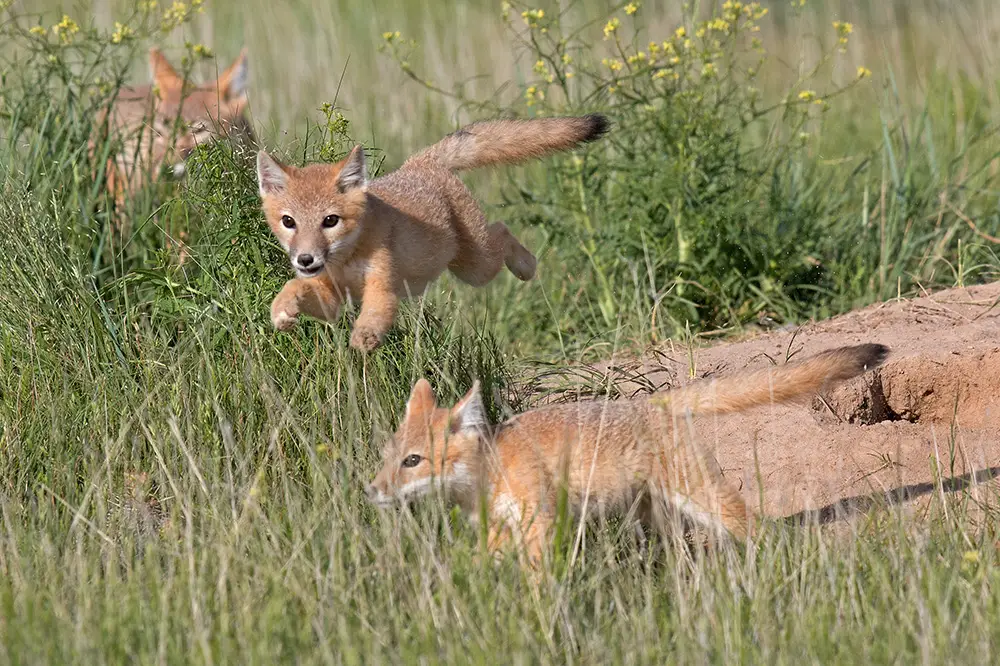
Left: Swift fox in the prairies of North America / Shutterstock & Right: Swift fox pups / Shutterstock
Kit fox | Vulpes macrotis
Found to the southwest in both the United States and Mexico, the kit fox is the last species to explore in North America and is another ecological specialist, sticking to semi-arid and arid terrain on either side of the border. It is characterised by its large ears, which help regulate body temperature and for which it is often compared to the fennec fox, which also has large ears but is almost twice as small. Aside from the nominate subspecies, the San Joaquin Kit Fox is the only known subspecies and is currently listed as endangered due to habitat loss and predation from larger canids such as the coyote.
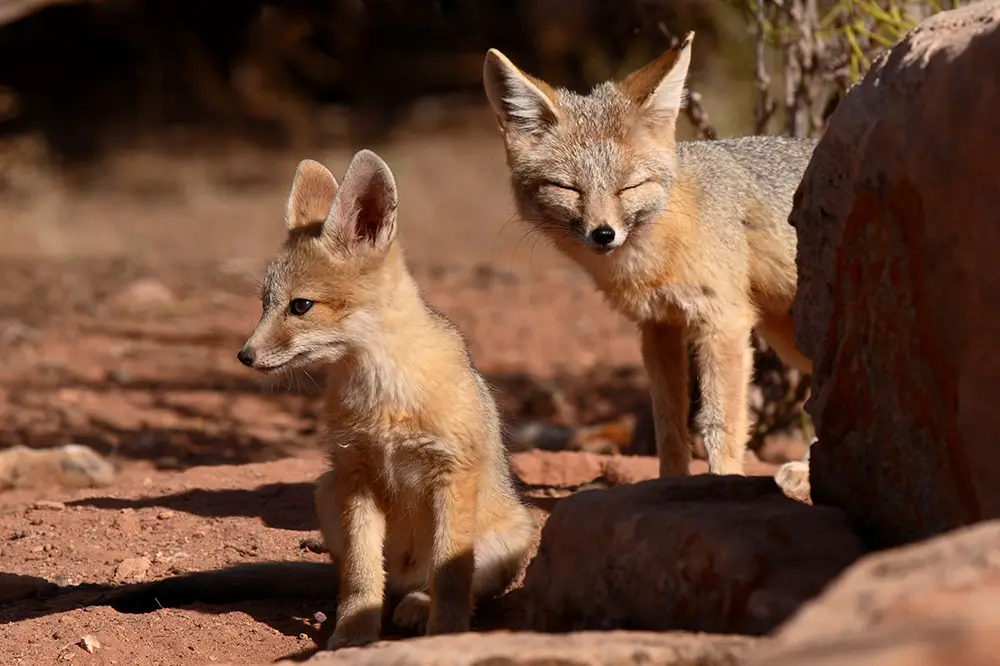
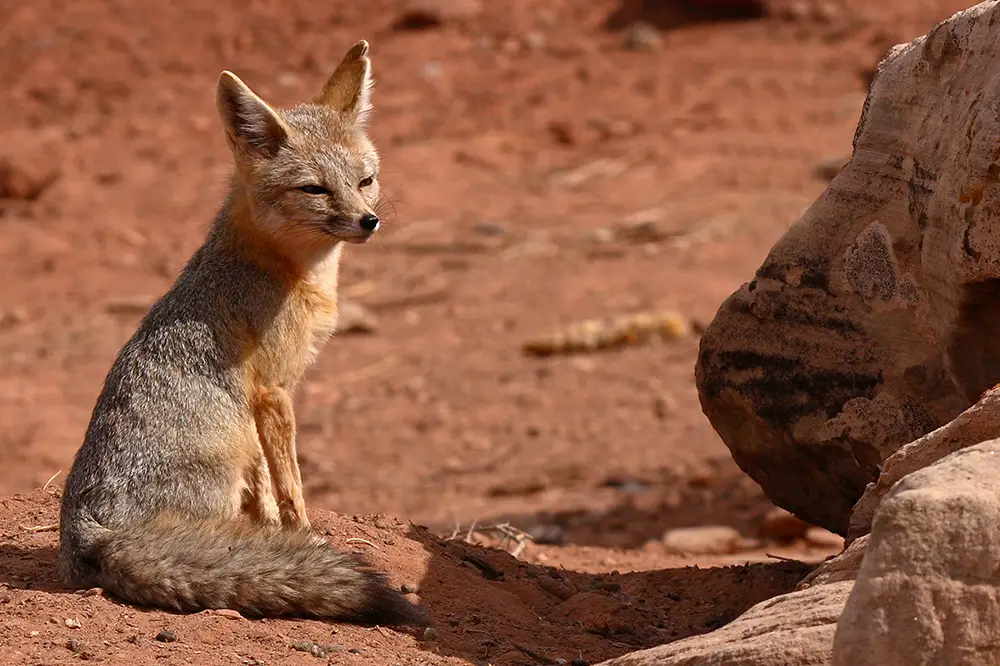
Left: Kit fox vixen and pup / Shutterstock & Right: Kit fox in Utah desert / Shutterstock
South America
All of the species discussed so far are found in the northern hemisphere and while the dense tropical forest of the Amazon is not suitable habitat for foxes, the grasslands and mountainous areas that surround this famous region are home to more species of foxes than exist on the North American Continent.
Andean fox / Culpeo | Lycalopex culpaeus
The Andean fox or Culpeo is South America’s answer to the common or red fox; at 31 lb / 14 kg they are essentially the same size but are most often cited as the second largest species of fox. As such, their only known predator is the puma, referred to in North America as the cougar or mountain lion, which has an enormous range and can weigh a staggering 265 lb / 120 kg. These foxes prey upon rabbits, rodents, birds and other small animals as well as eating carrion and, as omnivores, will also eat fruit. Andean foxes can be found at elevations of 14765 ft / 4500m and like the mountains themselves, their range stretches along the western side of the continent.
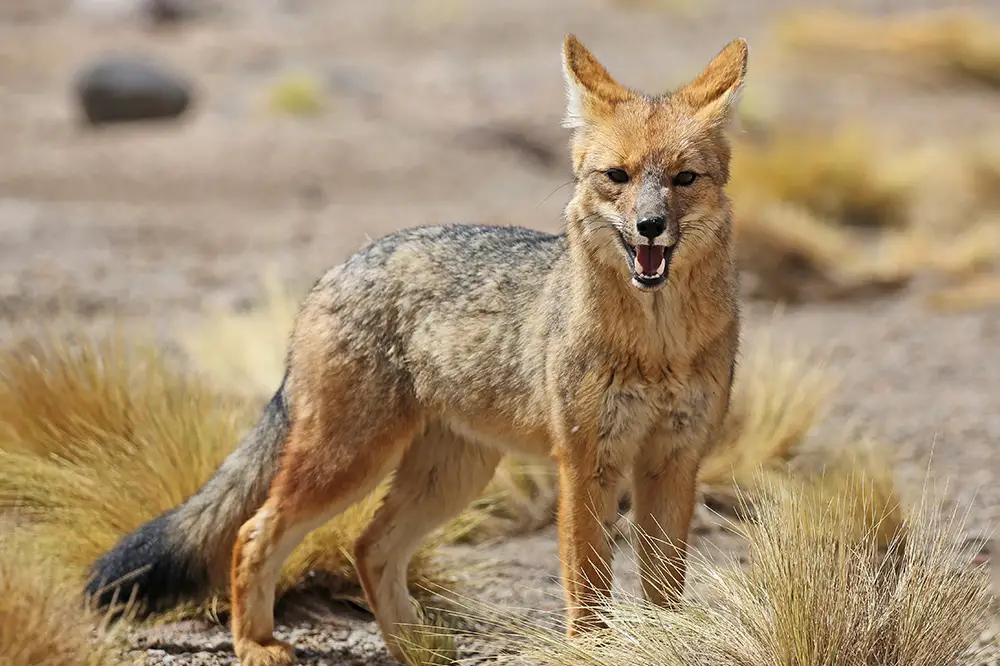
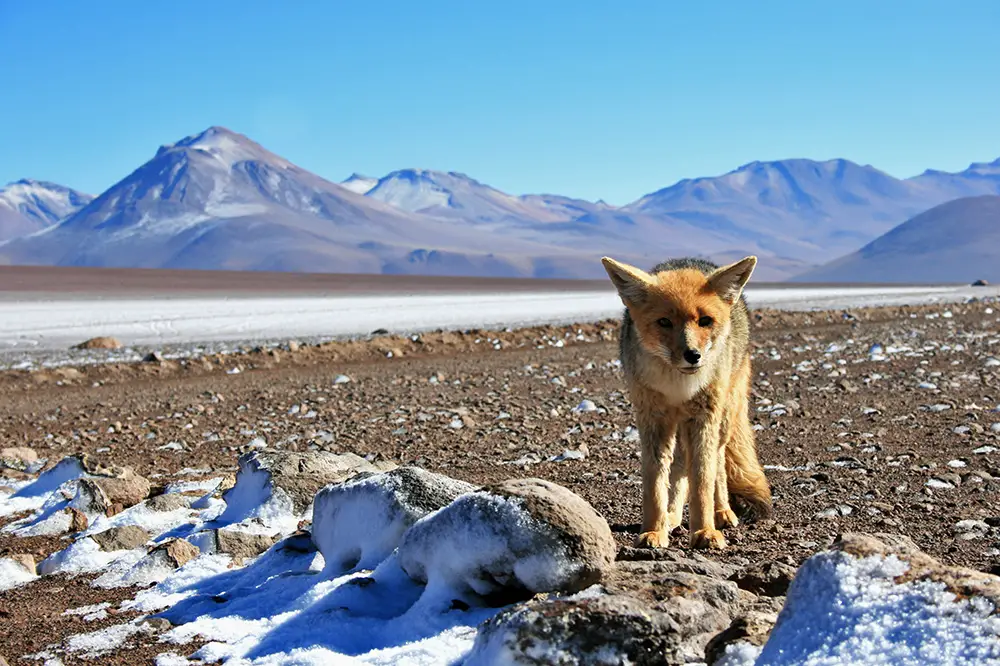
Left: The Andean fox, the second largest species of fox / Shutterstock & Right: Culpeo in the Andes / Shutterstock
Sechuran fox | Lycalopex sechurae
The Sechuran fox is a small species named after the Sechuran desert and inhabits arid environments in Ecuador and Peru.
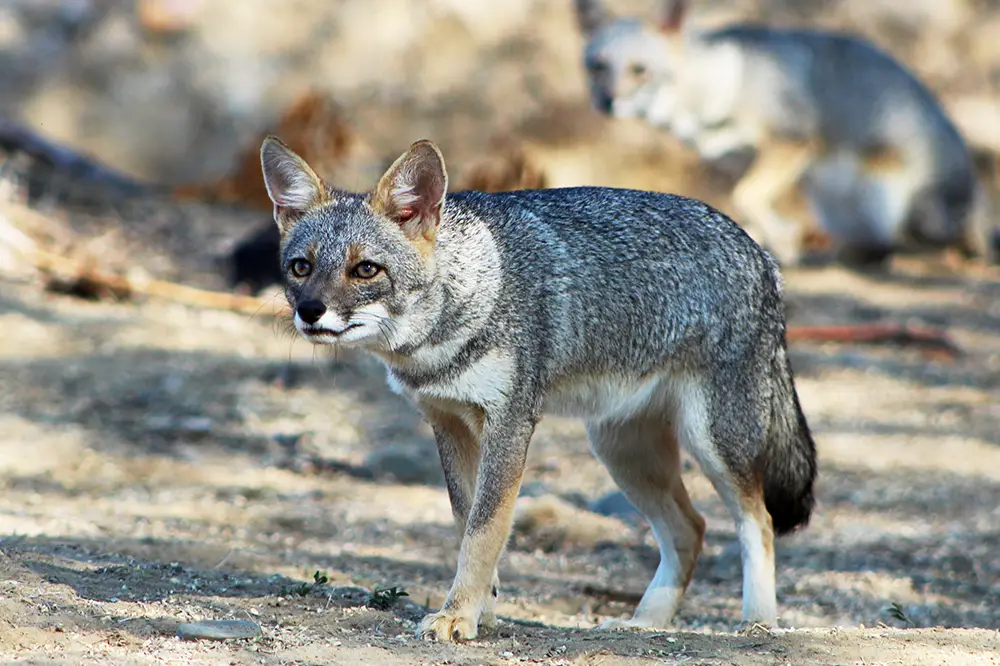
Darwin’s Fox/Zorro | Lycalopex fulvipes
To the south, Darwin’s fox is the smallest of the South American foxes. It is found only on the west coast of Chile and shares part of its range with South America’s version of the grey fox.
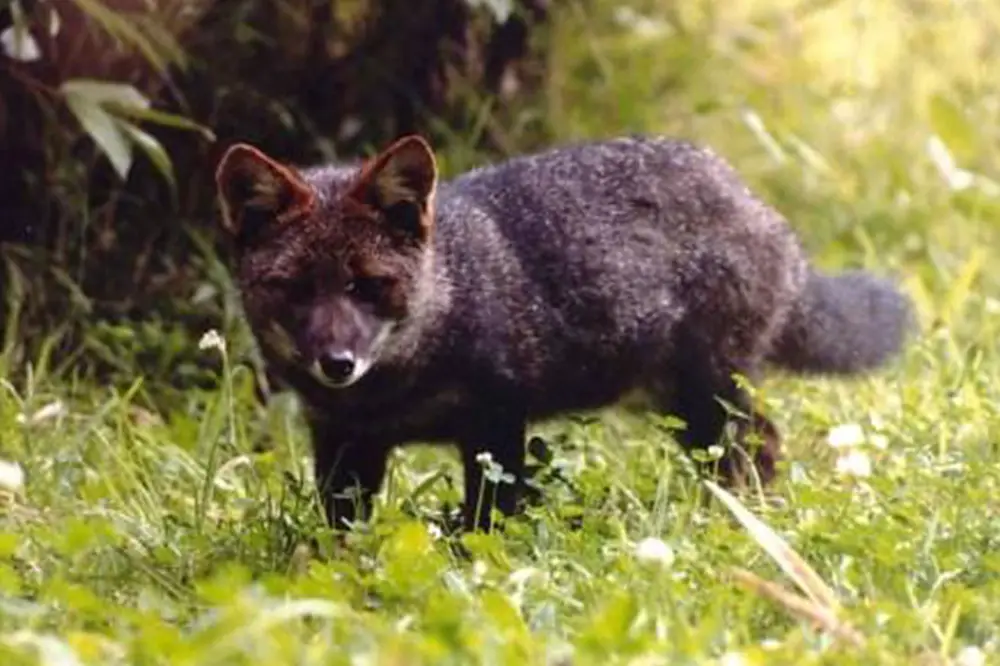
South American gray fox | Lycalopex griseus
The Patagonian fox also known as the South American grey fox is a small, hardy species found in the beautiful Patagonia region between Argentina and Chile. These foxes, like many, are thought of as solitary but come together to form monogamous pairs during the breeding season. In the southern hemisphere, this runs from August to September and sees pups born in the spring starting in October. The gestation period is roughly the same for most fox species at around 2 months and litter size is usually between 2-6 pups. This species is one of the smaller foxes of South America weighing no more than 8.8 lb / 4 kg and mostly hunts European rabbits, which are thought to have been introduced to Chile in the mid-18th century.
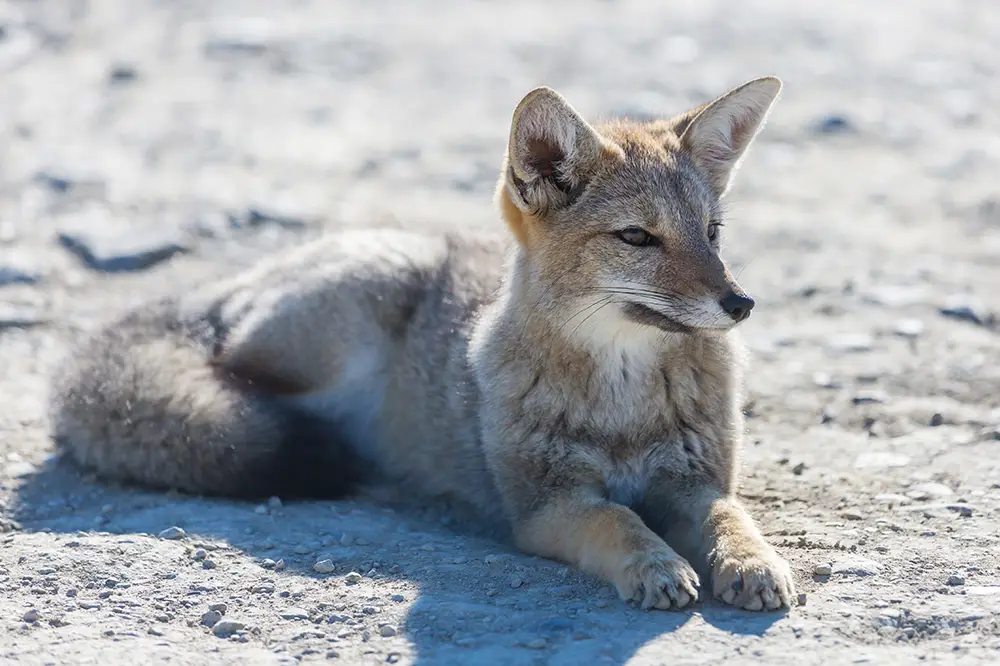
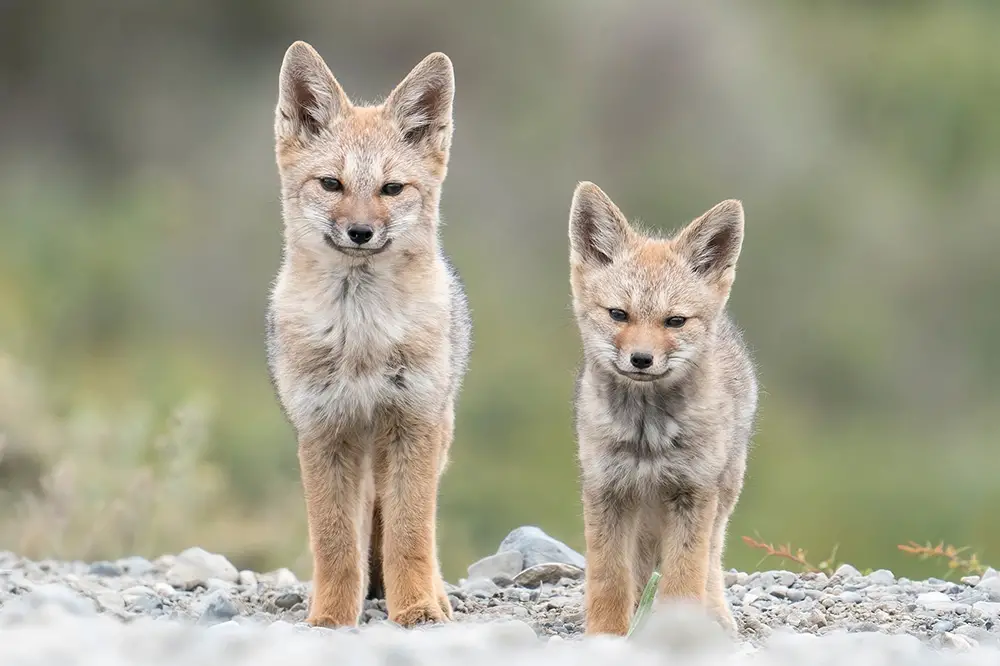
Left: South American grey fox (Lycalopex griseus) / Shutterstock & Right: Patagonian fox pups / Shutterstock
Pampas fox | Lycalopex gymnocercus
The Pampas fox is also found in Argentina and is distinguished by a dark muzzle and a brown-grey pelage streaked with lighter and darker regions and a black tip at the end of the tail. This species inhabits and is named after, the temperate grasslands that stretch between southern Brazil and eastern Argentina but can also be found as far north as Bolivia. Although these animals are larger than the Patagonia fox, weighing up to 14.3 lb / 6.5 kg they are thought to be preyed upon by large birds of prey such as eagles as well as larger carnivores.
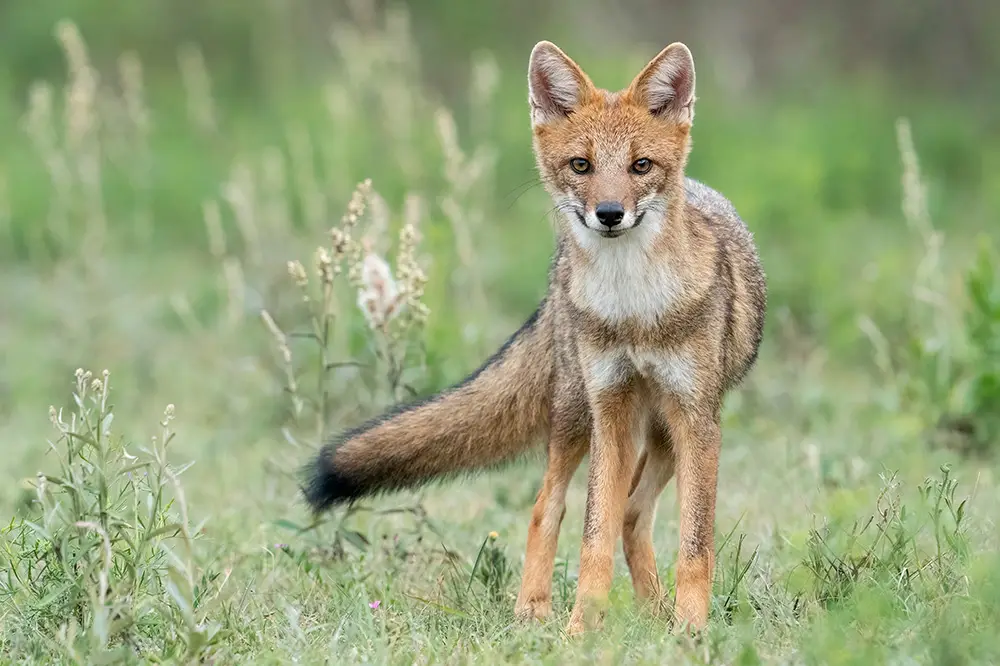
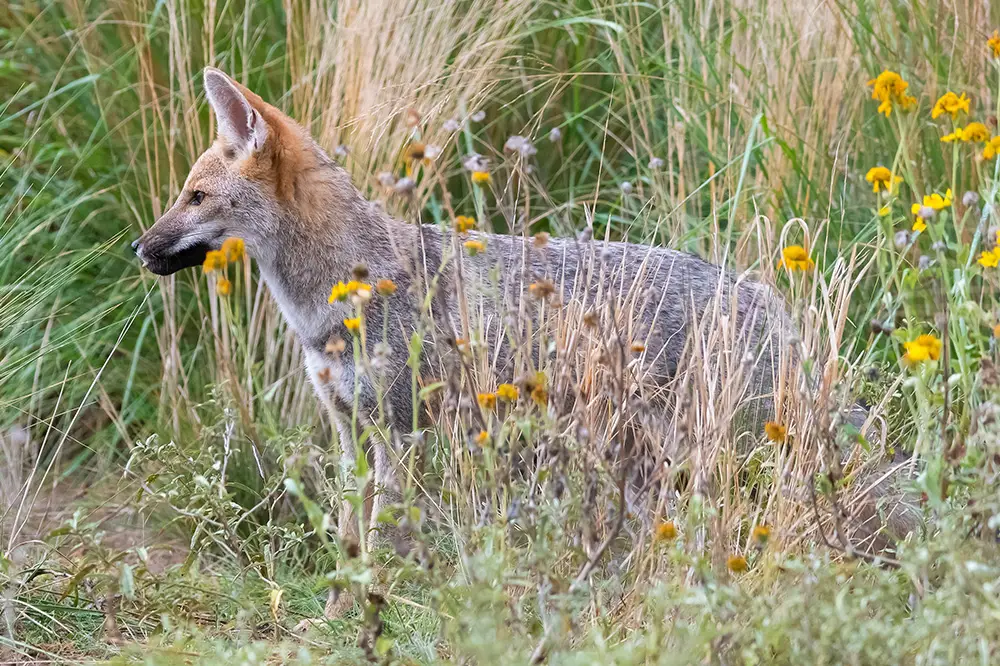
Left: Pampas fox (Lycalopex gymnocercus) / Shutterstock & Right: Pampas fox side profile / Shutterstock
Hoary fox | Lycalopex vetulus
There are two more species left to explore in South America but only one that is contained in the same genus as those previously discussed. The hoary fox is the sixth member of the Lycalopex genus and is grey in colour with a white underside. They mate between July and October and give birth to an average of 2-3 offspring.
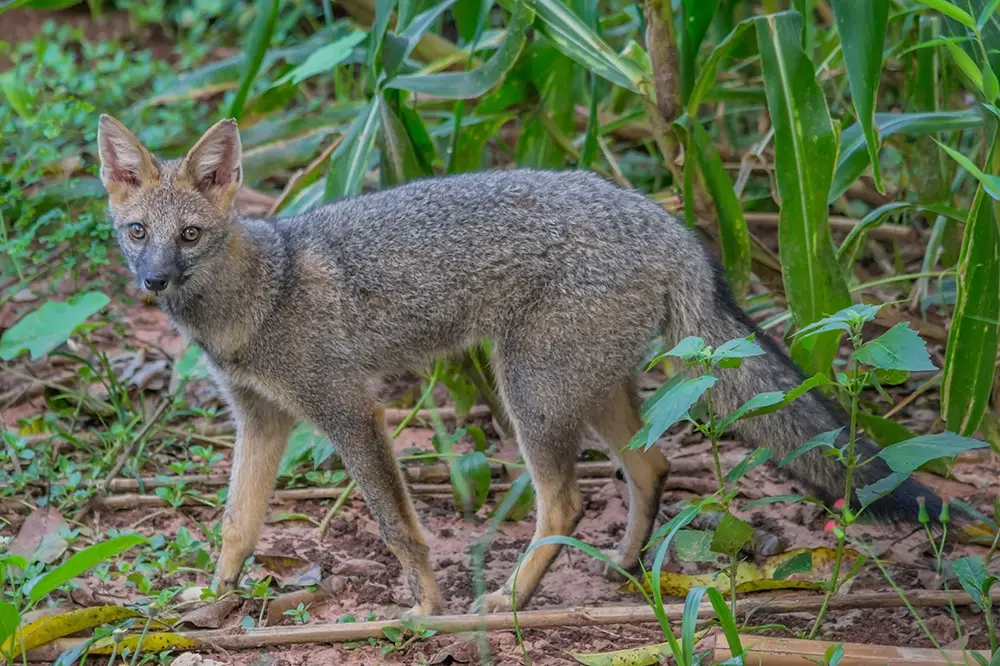
Crab-eating fox | Cerdocyon thous
Our last South American species is the crab-eating fox, which is named so for its tendency to hunt for crabs during the wet season although its diet is thought of as omnivorous and is not composed primarily of these animals. Their coat is grey-brown with areas of red around the head and legs, which is more prominent in some individuals than it is in others, and all individuals have back areas around their feet. At up to 17.6 lb / 8 kg they are the second largest fox in South America. The crab-eating fox is found both north and south of the Amazon in subtropical forest, grassland and woodland. In order to continue our journey we need to travel across the Atlantic to the tip of the African continent to visit another species in its own monotypic genus.
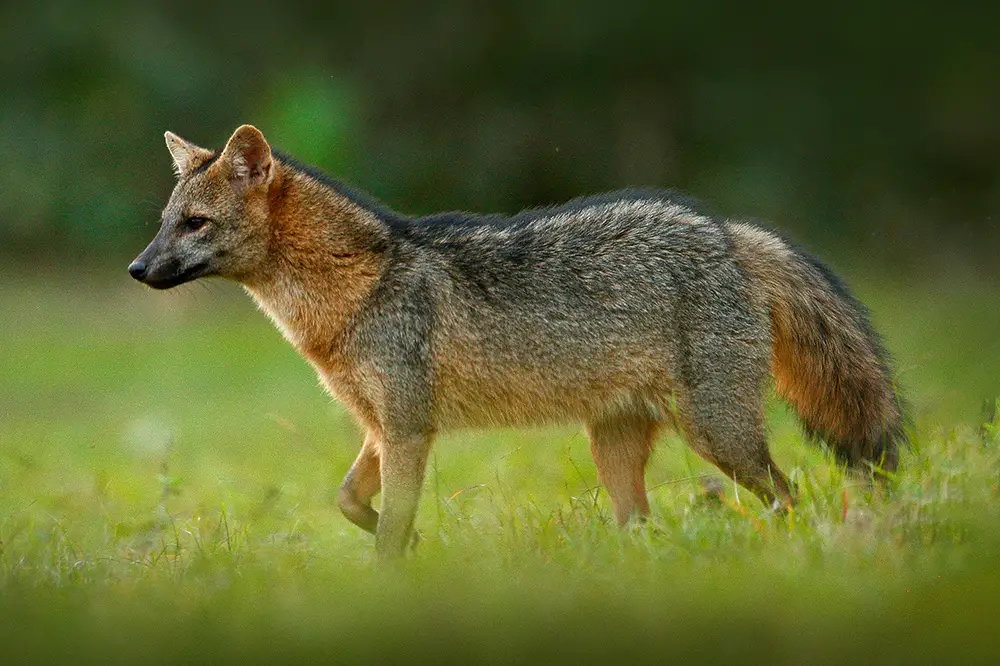
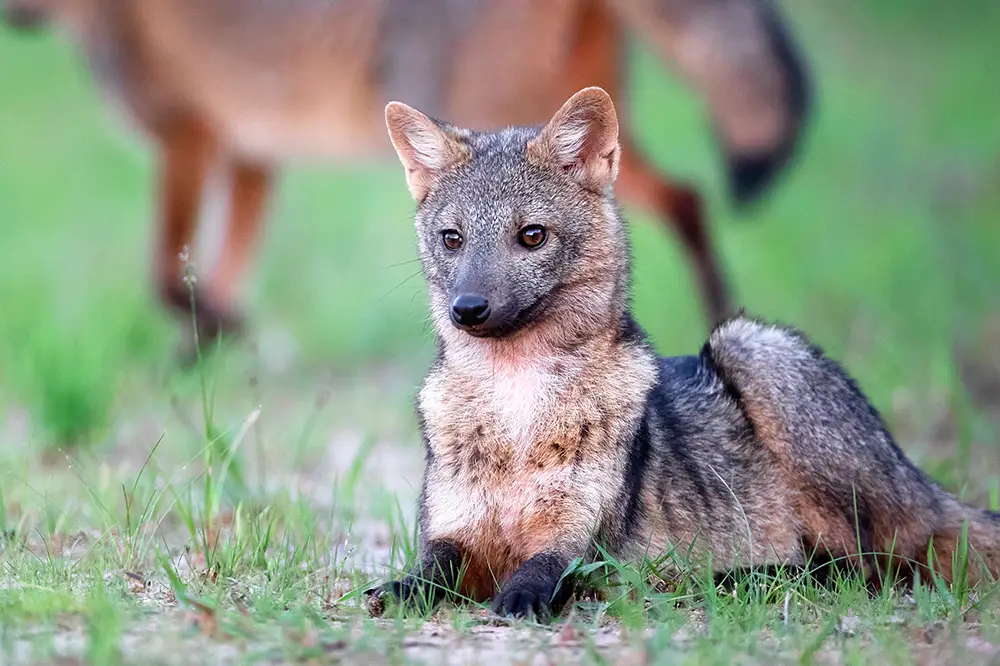
Left: Crab-eating fox (Cerdocyon thous) / Shutterstock & Right: Crab-eating fox with colourful coat / Shutterstock
Africa
Bat-eared Fox | Otocyon megalotis
Aside from its taxonomic status, the bat-eared fox is one of the most unique animals on this list for a variety of reasons. While many foxes are solitary, this species is thought of as social; although their family groups are small, consisting of a mated pair and their offspring, they are not territorial and their home ranges frequently overlap with those of other family groups. At 60-70 days, they also exhibit the longest gestation period of any fox, although their litter size is normal at between 2 to 6 pups. Its large ears can measure over 5.3 in / 13.5 cm long, which, amongst other uses, help it locate insects, its primary prey, with termites and beetles making up to 80% of its diet. Interestingly, it is because of this dietary specialisation that bat-eared foxes have more teeth than any other fox, processing between 46-50 compared to the usual 42. This species is also referred to by several other names including the big-eared fox and the cape fox, which is not to be confused with our next species of the same name.
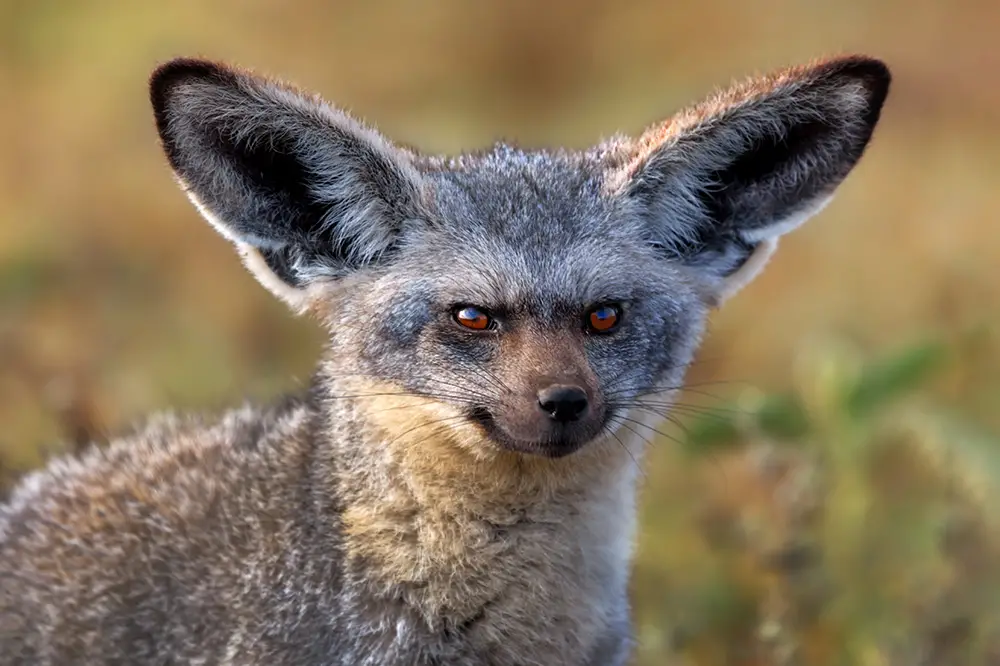
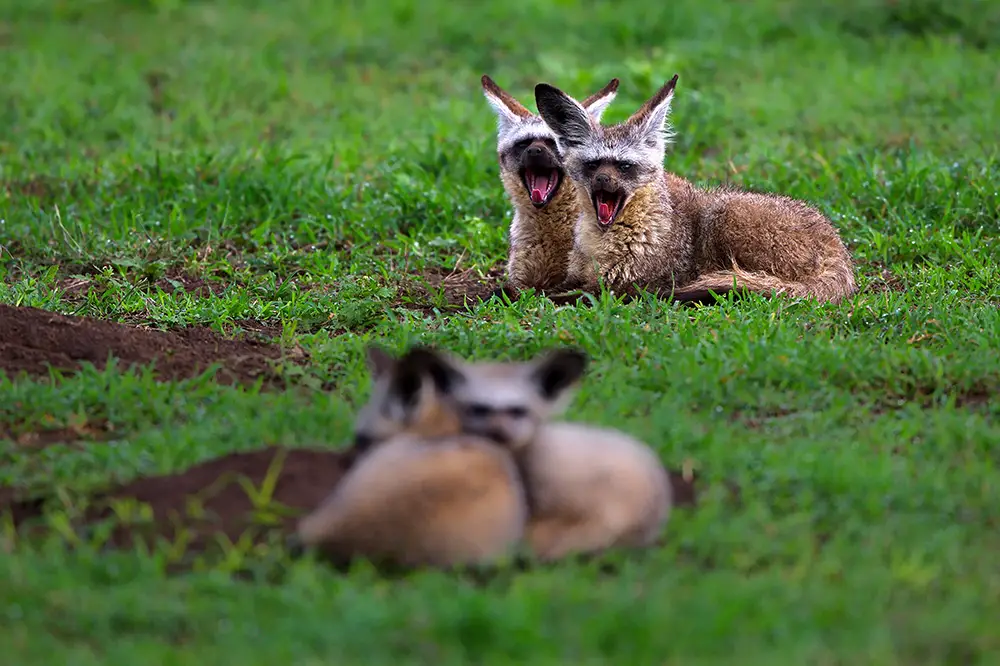
Left: Bat-eared fox with large ears / Shutterstock & Right: Sociable group of bat-eared foxes / Shutterstock
Cape Fox | Vulpes chama
The cape fox is the second smallest African species, weighing no more than 5.7 lb / 2.6 kg and is characterised by its large ears and silver-grey fur, with reddish areas around the head and limbs and darker areas on the muzzle and the tip of the tail. The average lifespan of the cape fox is 10 years in the wild, which is indicative of both African and Asian foxes who tend to live much longer than those in North America whose life expectancy is usually between 3 to 6 years. Offspring are born from October to November and are initially cared for by both the male and the female. Independence is reached by 5 months and cape foxes reach sexual maturity by 9 months of age. This species lives mostly in semi-arid and arid areas and are named so for its range, which covers South Africa’s Cape province and can also be found as far north as southern Angola. On the opposite side of the continent, lives another desert specialist, whose range covers almost all of the Saharan Desert.
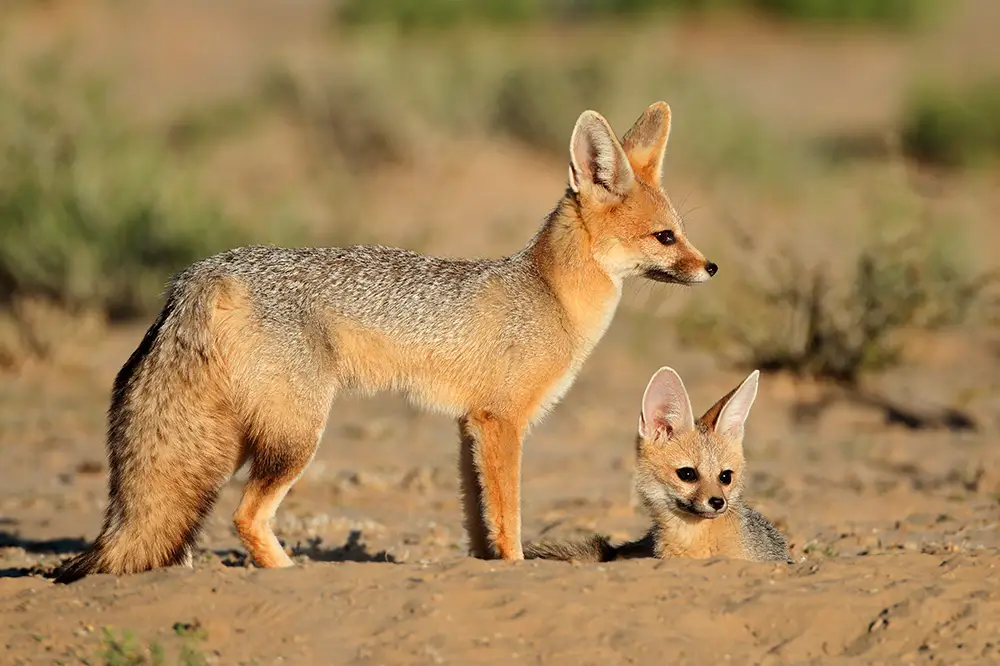
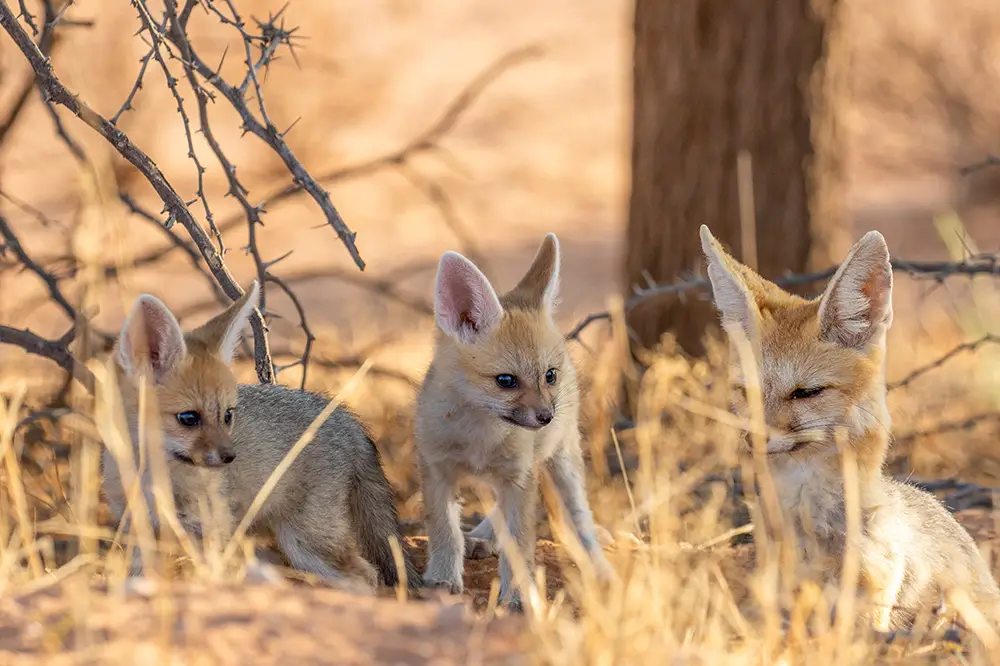
Left: Cape fox vixen with pup / Shutterstock & Right: Cape fox family / Shutterstock
Fennec fox | Vulpes zerda
The fennec is one of the most famous fox species, widely known for its disproportionately large ears and tiny size, weighing no more than 3.3 lb / 1.5 kg making them the smallest canids on earth. Like many foxes, fennecs are nocturnal, spending their days escaping the sweltering heat in their underground burrows and emerging at night to hunt. Their large ears, which can measure up to 6 in / 15.2 cm long are dual purpose; they dissipate heat allowing them to control their body temperature in the desert environment and serve as a listening device, allowing them to detect the movement of their prey underneath the sand.
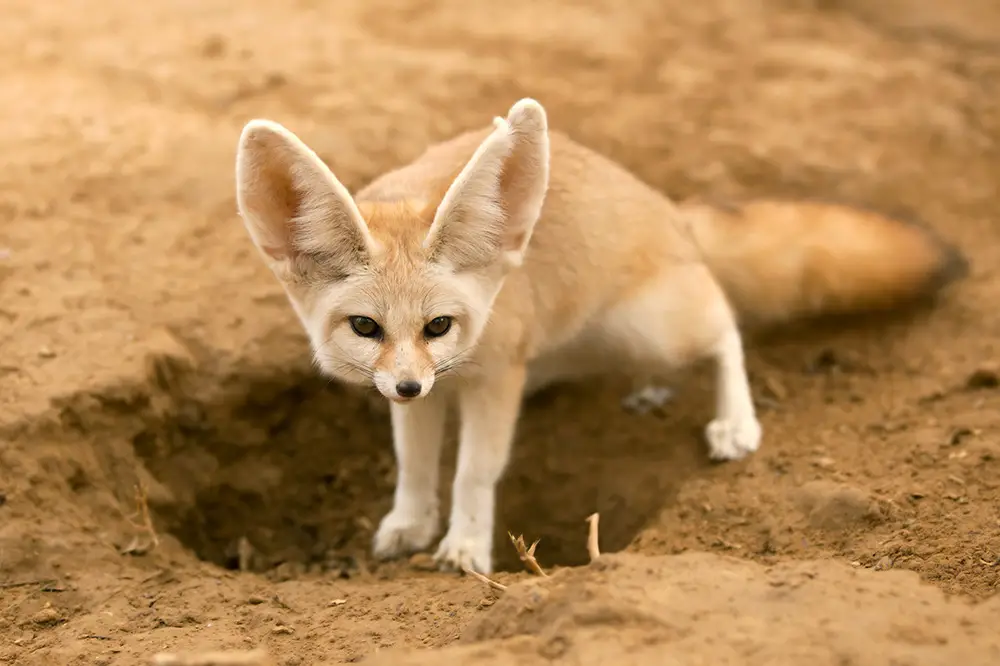
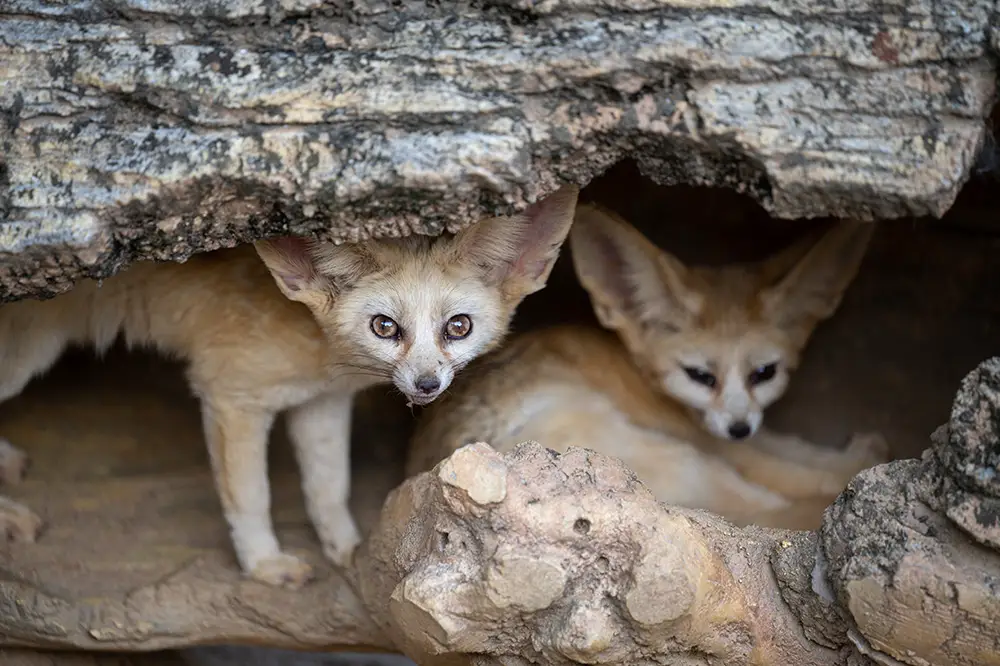
Left: Fennec fox digging / Shutterstock & Right: Pair of Fennec foxes escaping the heat of the day / Shutterstock
As omnivores, fennec foxes eat a variety of small animals including rodents, birds, reptiles and invertebrates as well as fruit, leaves and roots, which provide this species with 100% of their hydration. Another area where fennecs are quite unique is their social behaviour. They can be found in abnormally large groups of up to 10, which usually consist of a monogamous mating pair, their litter and several foxes who stay from the previous litter. In addition to the Fennec, there are two other species that call North Africa their home.
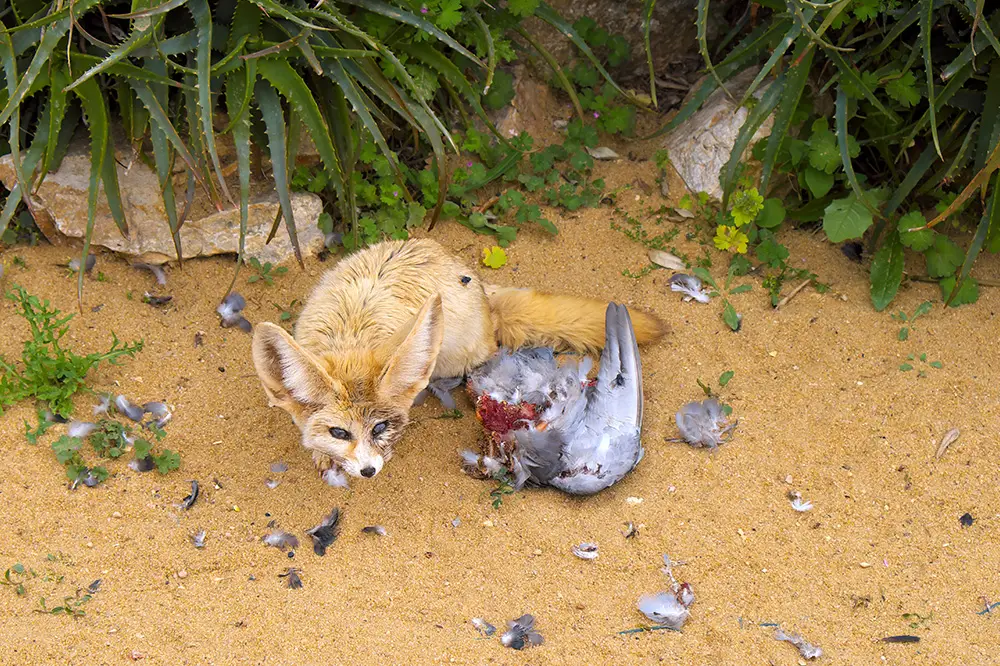
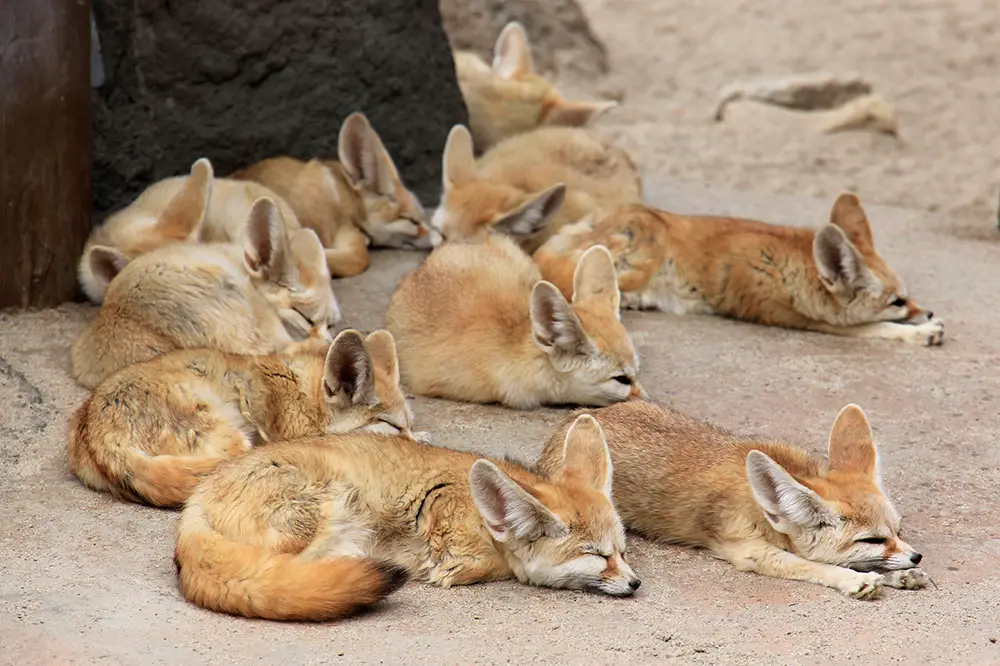
Left: Fennec fox with a bird / Shutterstock & Right: Group of fennec foxes / Shutterstock
Pale fox | Vulpes pallida
The pale fox is found in the transitional zone to the south of the Sahara. At no more than 8 lb / 3.6 kg they are medium in size and visually very similar to the other North African species, Rüppell’s fox.
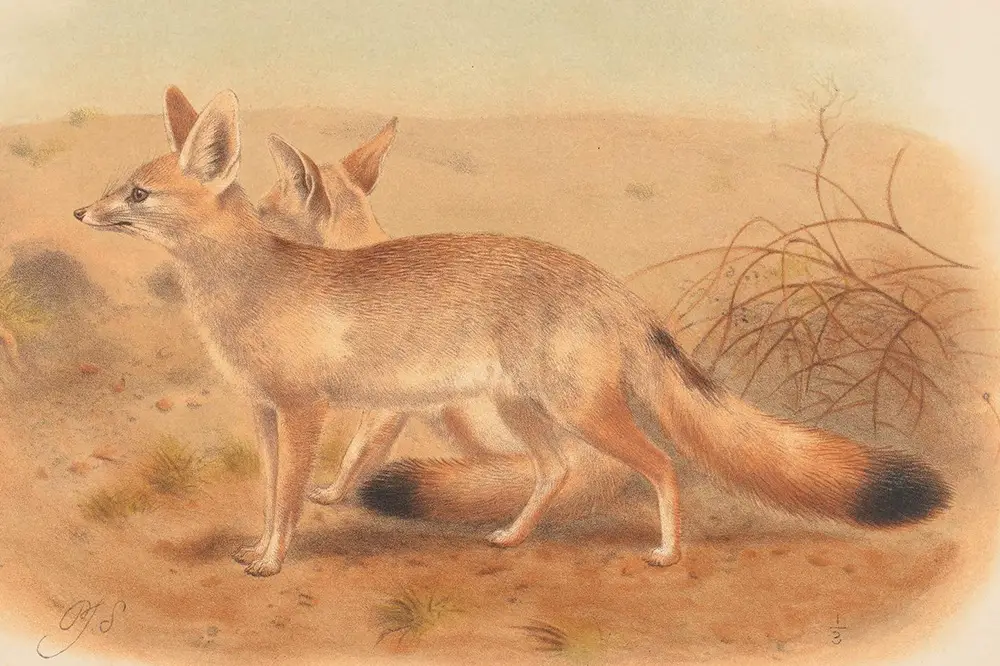
Rüppell’s fox | Vulpes rueppellii
This species occupies a very similar range to the Fennec but extends through the Middle East as far as Pakistan. They are roughly the same size as the pale fox and in addition to their large ears, the soles of their feet are covered with pads of fur, helping to protect their foot pads on the hot sand. The home range of Rüppell’s fox can be 69 sq km / 26.6 sq mi and is marked with urine, most often by males.

Asia
Moving to Asia, the steppe is home to many incredible animals including the Saiga antelope and Przewalski’s horse but none are arguably more majestic than our next species, the Corsac fox.
Corsac Fox | Vulpes corsac
These canids are found both on the steppe and in the arid areas that border this vast expanse of temperate grassland. Like the Arctic fox, their summer and winter coats are quite different in appearance, sporting a thicker, lighter coat in the winter months, which moults down to a darker thinner coat for summer. One of the smaller species, weighing 2.7 kg / 6 lb corsacs are described as nomadic, adjusting their home range to counter the colder seasons on the steppe, which makes hunting more difficult. They are described as mostly carnivorous, with small rodents making up a large portion of their diet; corsacs and many other foxes use this leaping technique to secure unsuspecting prey; the fox will use its keen sensory toolkit to locate and stalk prey before leaping into the air, landing directly on top of its chosen victim before securing the kill with its bite.
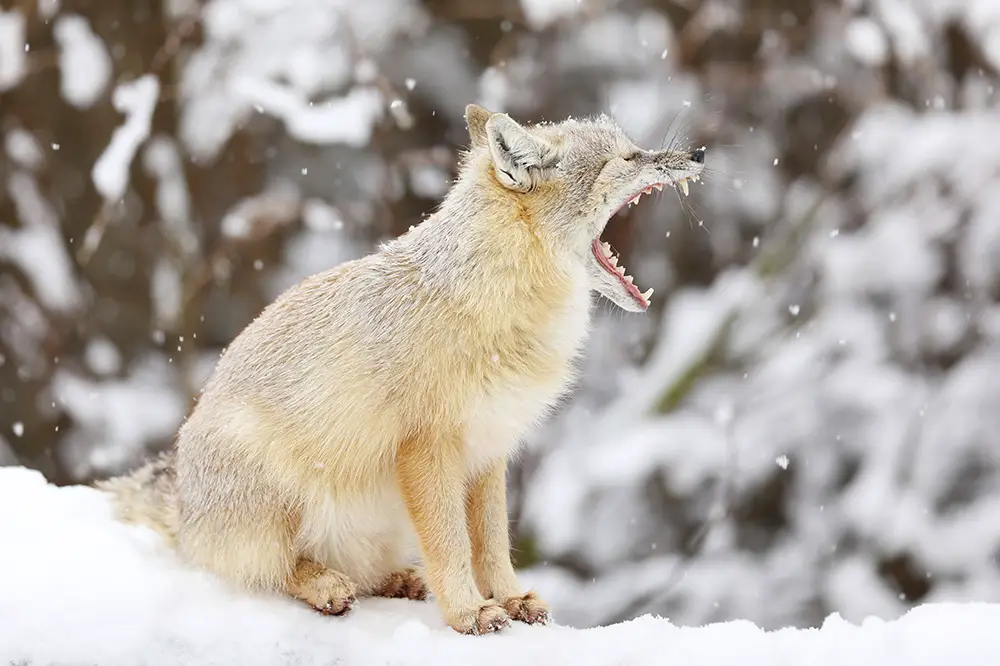
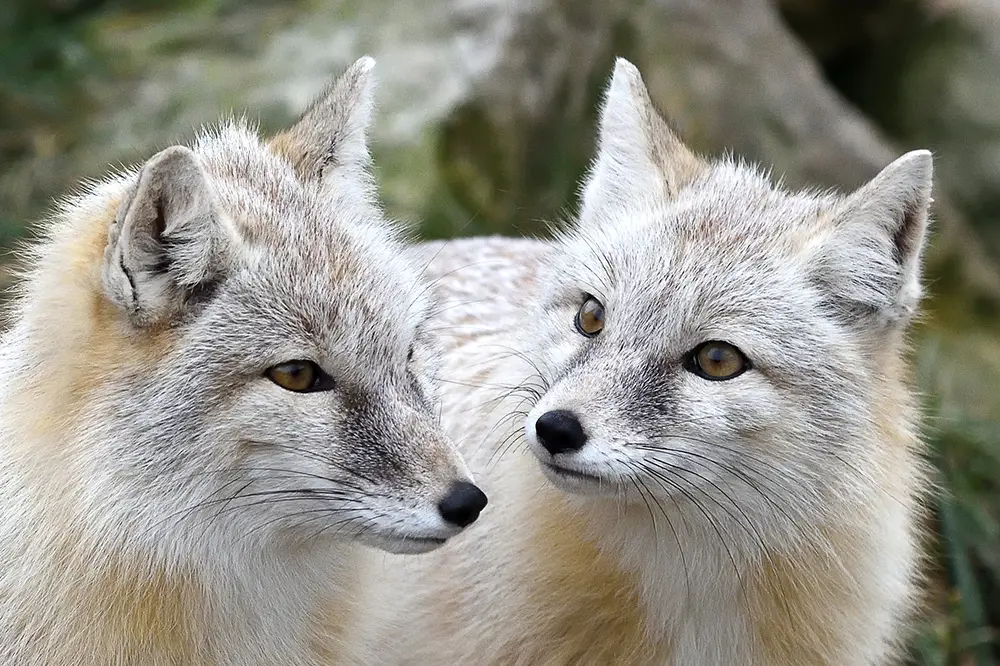
Left: Corsac fox yawning in the snow / Shutterstock & Right: Majestic pair of corsac foxes / Shutterstock
Tibetan Fox | Vulpes ferrilata
There are 3 species that remain on our list, the first of which is confined to the Tibetan plateau. The face of the Tibetan fox is not too dissimilar to that of the Corsac but this species exhibits especially thick fur to stave off the cold temperatures at higher elevations of up to 17390 ft / 5,300m. Not only is the Tibetan fox monogamous but they form life-long partnerships with their mates and are not especially territorial, often sharing their hunting grounds with other pairs.
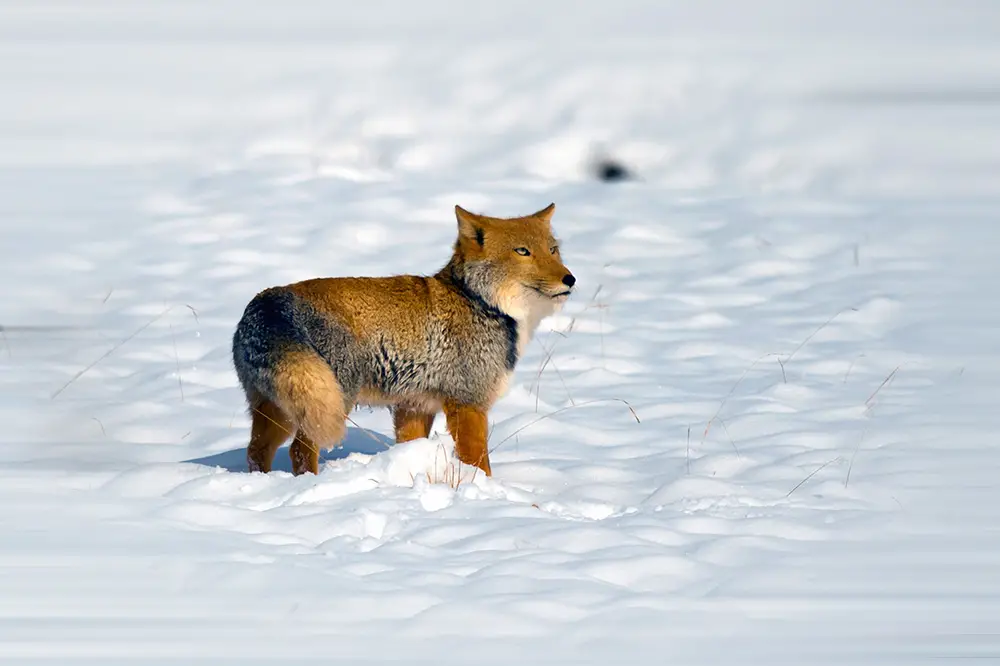
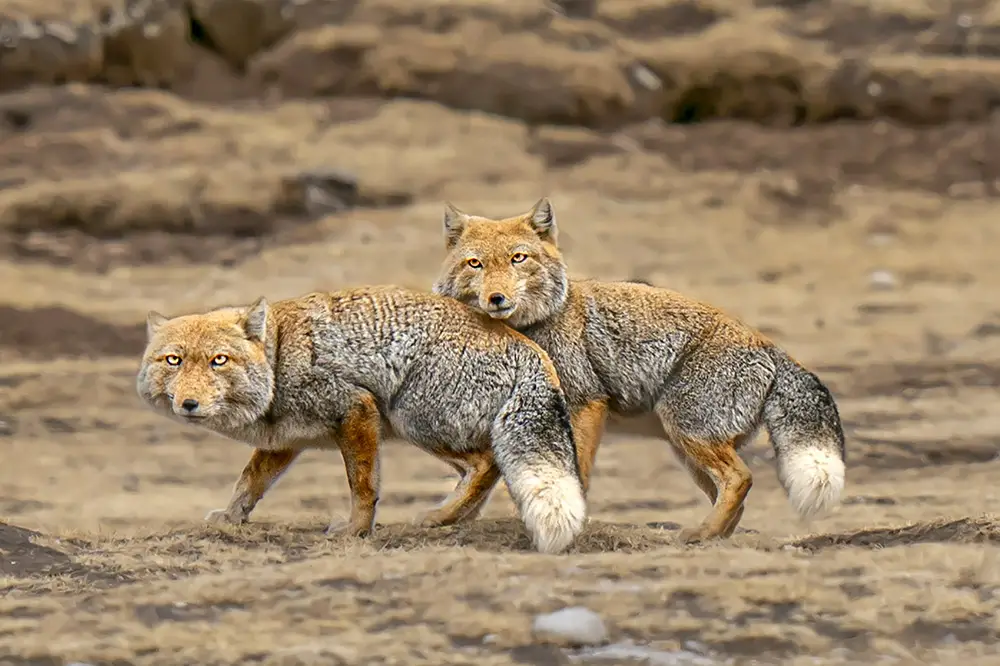
Left: Tibetan fox in the snow / Shutterstock & Right: Tibetan foxes of the Tibetan Plateaux / Shutterstock
Blanford’s Fox | Vulpes cana
Heading east, Blanford’s fox is found throughout the Middle East and although they are generally found in mountainous terrain, they are another species that sport large ears to dissipate heat.
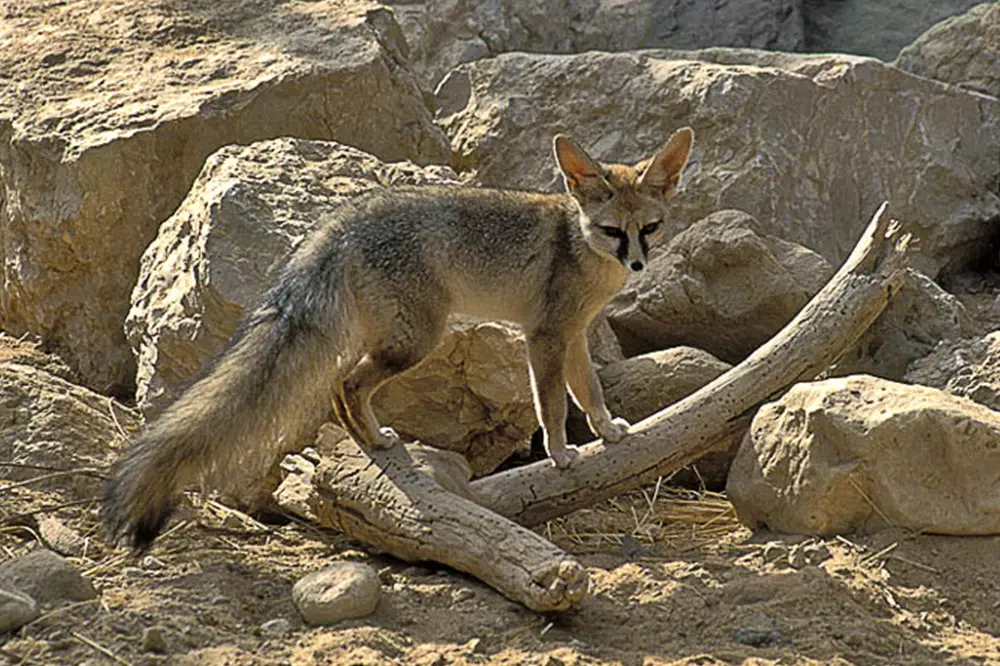
Bengal Fox | Vulpes bengalensis
To visit our final species, we need to head to the Indian Subcontinent to view a fox found as far west as Pakistan and as far east as Bangladesh. The Indian or Bengal fox is similar in appearance to the cape fox but is larger, weighing up to 9.2 lb / 4.2kg. They mostly occupy non-forested areas such as grassland and arid areas such as desert. Before the breeding season commences in the northern hemisphere’s winter months, dens are either re-excavated or dug afresh. Offspring, which number between 2 to 6 per litter will stay with their family group for 4 to 5 months before leaving to establish their own territory and find a mate. Like many of the African species, Bengal foxes are thought to live for around 10 years in the wild and although there is a lack of substantial evidence, they are thought to form long-term monogamous pairs.
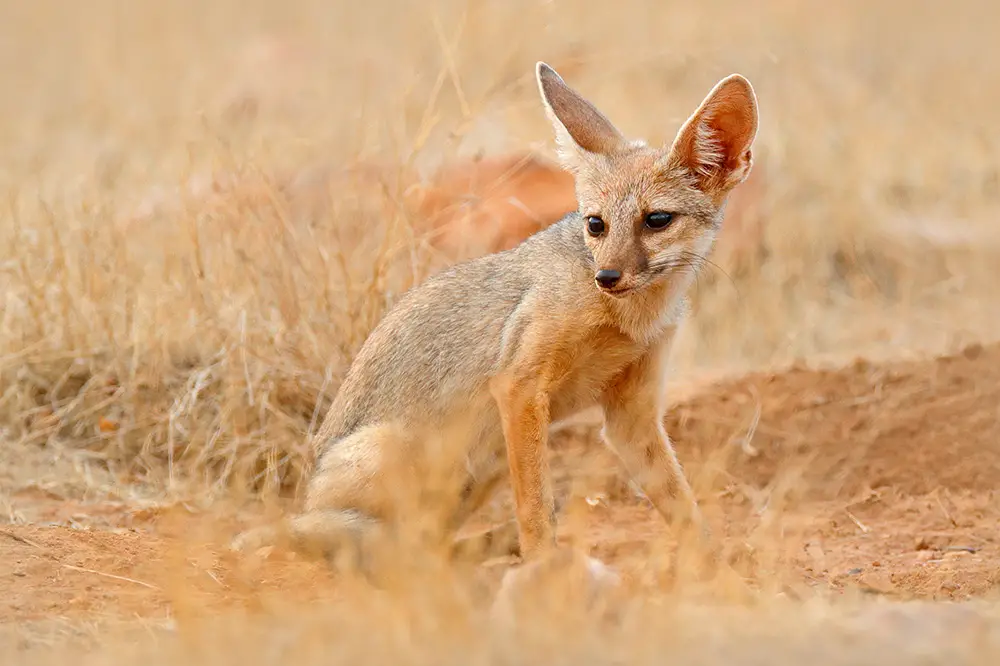
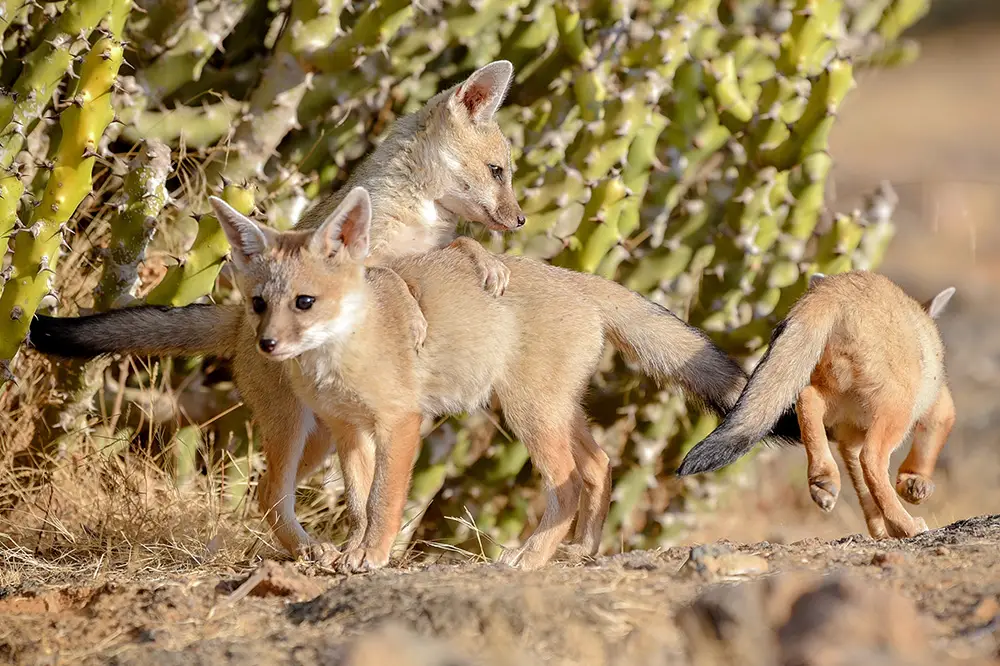
Left: Bengal/Indian fox next to den entrance / Shutterstock & Right: Bengal fox pups playing / Shutterstock
